
| Fund Summaries |
|
| SPDR Dow Jones Global Real Estate ETF |
3 |
| SPDR Dow Jones International Real Estate ETF |
9 |
| SPDR EURO STOXX 50 ETF |
15 |
| SPDR MSCI ACWI Climate Paris Aligned ETF |
21 |
| SPDR MSCI ACWI ex-US ETF |
30 |
| SPDR MSCI EAFE Fossil Fuel Reserves Free ETF |
37 |
| SPDR MSCI EAFE StrategicFactorsSM ETF |
44 |
| SPDR MSCI Emerging Markets Fossil Fuel Reserves Free ETF |
52 |
| SPDR MSCI Emerging Markets StrategicFactorsSM ETF |
60 |
| SPDR MSCI World StrategicFactorsSM ETF |
67 |
| SPDR Portfolio Developed World ex-US ETF |
73 |
| SPDR Portfolio Emerging Markets ETF |
79 |
| SPDR Portfolio Europe ETF |
86 |
| SPDR Portfolio MSCI Global Stock Market ETF |
92 |
| SPDR S&P China ETF |
98 |
| SPDR S&P Emerging Asia Pacific ETF |
105 |
| SPDR S&P Emerging Markets Dividend ETF |
113 |
| SPDR S&P Emerging Markets Small Cap ETF |
120 |
| SPDR S&P Global Dividend ETF |
127 |
| SPDR S&P Global Infrastructure ETF |
134 |
| SPDR S&P Global Natural Resources ETF |
141 |
| SPDR S&P International Dividend ETF |
148 |
| SPDR S&P International Small Cap ETF |
155 |
| SPDR S&P North American Natural Resources ETF |
161 |
| Additional Strategies Information |
167 |
| Additional Risk Information |
168 |
| Management |
203 |
| Index/Trademark Licenses/Disclaimers |
208 |
| Additional Purchase and Sale Information |
211 |
| Distributions |
212 |
| Portfolio Holdings Disclosure |
213 |
| Additional Tax Information |
213 |
| General Information |
217 |
| Financial Highlights |
217 |
| Where to Learn More About the Funds |
Back Cover |
Investment Objective |
| The SPDR Dow Jones Global Real Estate ETF (the “Fund”) seeks to provide investment results that, before |
| Management fees |
|
| Distribution and service (12b-1) fees |
|
| Other expenses1 |
|
| Total annual Fund operating expenses1 |
|
| Year 1 |
Year 3 |
Year 5 |
Year 10 |
| $ |
$ |
$ |
$ |
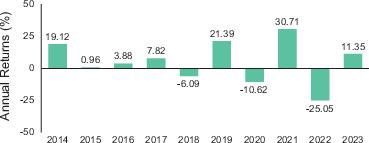
| |
One Year |
Five Years |
Ten Years |
| Return Before Taxes |
|
|
|
| Return After Taxes on Distributions |
|
|
|
| Return After Taxes on Distributions and Sale of Fund Shares |
|
|
|
| Dow Jones Global Select Real Estate Securities Index (reflects no deduction for fees, expenses or taxes other than withholding taxes on reinvested dividends) |
|
|
|
| MSCI ACWI ex USA Index (reflects no deduction for fees, expenses or taxes other than withholding taxes on reinvested dividends) |
|
|
|
Investment Objective |
| The SPDR Dow Jones International Real Estate ETF (the “Fund”) seeks to provide investment results, |
| Management fees |
|
| Distribution and service (12b-1) fees |
|
| Other expenses1 |
|
| Total annual Fund operating expenses1 |
|
| Year 1 |
Year 3 |
Year 5 |
Year 10 |
| $ |
$ |
$ |
$ |
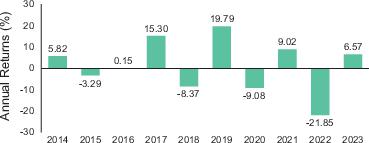
| |
One Year |
Five Years |
Ten Years |
| Return Before Taxes |
|
- |
|
| Return After Taxes on Distributions |
|
- |
- |
| Return After Taxes on Distributions and Sale of Fund Shares |
|
- |
|
| Dow Jones Global ex-U.S. Select Real Estate Securities Index (reflects no deduction for fees, expenses or taxes other than withholding taxes on reinvested dividends) |
|
- |
|
| MSCI ACWI ex USA Index (reflects no deduction for fees, expenses or taxes other than withholding taxes on reinvested dividends) |
|
|
|
| Investment Objective |
| |
| Management fees |
|
| Distribution and service (12b-1) fees |
|
| Other expenses |
|
| Total annual Fund operating expenses |
|
| Year 1 |
Year 3 |
Year 5 |
Year 10 |
| $ |
$ |
$ |
$ |
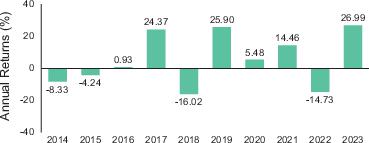
| |
One Year |
Five Years |
Ten Years |
| Return Before Taxes |
|
|
|
| Return After Taxes on Distributions |
|
|
|
| Return After Taxes on Distributions and Sale of Fund Shares |
|
|
|
| EURO STOXX 50 Index (reflects no deduction for fees, expenses or taxes other than withholding taxes on reinvested dividends) |
|
|
|
| MSCI ACWI ex USA Index (reflects no deduction for fees, expenses or taxes other than withholding taxes on reinvested dividends) |
|
|
|
Investment Objective |
| The SPDR MSCI ACWI Climate Paris Aligned ETF (the “Fund”) seeks to provide investment results that, |
| Management fees |
|
| Distribution and service (12b-1) fees |
|
| Other expenses1 |
|
| Total annual Fund operating expenses1 |
|
| Year 1 |
Year 3 |
Year 5 |
Year 10 |
| $ |
$ |
$ |
$ |
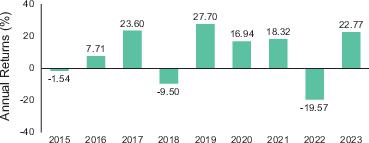
| |
One Year |
Five Years |
Since Inception ( |
| Return Before Taxes |
|
|
|
| Return After Taxes on Distributions |
|
|
|
| Return After Taxes on Distributions and Sale of Fund Shares |
|
|
|
| MSCI ACWI Climate Paris Aligned Index/MSCI ACWI Low Carbon Target Index1 (reflects no deduction for fees, expenses or taxes other than withholding taxes on reinvested dividends) |
|
|
|
| MSCI ACWI ex USA Index (reflects no deduction for fees, expenses or taxes other than withholding taxes on reinvested dividends) |
|
|
|
Investment Objective |
| |
| Management fees |
|
| Distribution and service (12b-1) fees |
|
| Other expenses |
|
| Total annual Fund operating expenses |
|
| Year 1 |
Year 3 |
Year 5 |
Year 10 |
| $ |
$ |
$ |
$ |
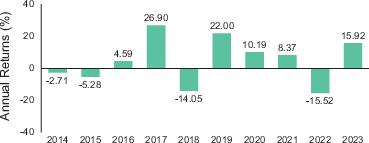
| |
One Year |
Five Years |
Ten Years |
| Return Before Taxes |
|
|
|
| Return After Taxes on Distributions |
|
|
|
| Return After Taxes on Distributions and Sale of Fund Shares |
|
|
|
| MSCI ACWI ex USA Index (reflects no deduction for fees, expenses or taxes other than withholding taxes on reinvested dividends) |
|
|
|
| MSCI ACWI IMI Index (reflects no deduction for fees, expenses or taxes other than withholding taxes on reinvested dividends) |
|
|
|
Investment Objective |
| |
| Management fees |
|
| Distribution and service (12b-1) fees |
|
| Other expenses1 |
|
| Total annual Fund operating expenses1 |
|
| Year 1 |
Year 3 |
Year 5 |
Year 10 |
| $ |
$ |
$ |
$ |
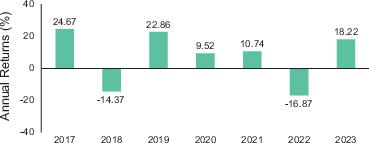
| |
One Year |
Five Years |
Since Inception |
| Return Before Taxes |
|
|
|
| Return After Taxes on Distributions |
|
|
|
| Return After Taxes on Distributions and Sale of Fund Shares |
|
|
|
| MSCI EAFE ex Fossil Fuels Index (reflects no deduction for fees, expenses or taxes other than withholding taxes on reinvested dividends) |
|
|
|
| MSCI ACWI ex USA Index (reflects no deduction for fees, expenses or taxes other than withholding taxes on reinvested dividends) |
|
|
|
Investment Objective |
| |
| Management fees |
|
| Distribution and service (12b-1) fees |
|
| Other expenses |
|
| Total annual Fund operating expenses |
|
| Year 1 |
Year 3 |
Year 5 |
Year 10 |
| $ |
$ |
$ |
$ |
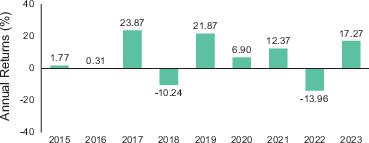
| |
One Year |
Five Years |
Since Inception ( |
| Return Before Taxes |
|
|
|
| Return After Taxes on Distributions |
|
|
|
| Return After Taxes on Distributions and Sale of Fund Shares |
|
|
|
| MSCI EAFE Factor Mix A-Series Index (reflects no deduction for fees, expenses or taxes other than withholding taxes on reinvested dividends) |
|
|
|
| MSCI ACWI ex USA Index (reflects no deduction for fees, expenses or taxes other than withholding taxes on reinvested dividends) |
|
|
|
Investment Objective |
| |
| Management fees |
|
| Distribution and service (12b-1) fees |
|
| Other expenses |
|
| Total annual Fund operating expenses |
|
| Year 1 |
Year 3 |
Year 5 |
Year 10 |
| $ |
$ |
$ |
$ |
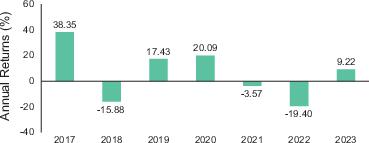
| |
One Year |
Five Years |
Since Inception |
| Return Before Taxes |
|
|
|
| Return After Taxes on Distributions |
|
|
|
| Return After Taxes on Distributions and Sale of Fund Shares |
|
|
|
| MSCI Emerging Markets ex Fossil Fuels Index (reflects no deduction for fees, expenses or taxes other than withholding taxes on reinvested dividends) |
|
|
|
| MSCI ACWI ex USA Index (reflects no deduction for fees, expenses or taxes other than withholding taxes on reinvested dividends) |
|
|
|
Investment Objective |
| The SPDR MSCI Emerging Markets StrategicFactorsSM ETF (the “Fund”) seeks to provide investment results |
| Management fees |
|
| Distribution and service (12b-1) fees |
|
| Other expenses |
|
| Total annual Fund operating expenses |
|
| Year 1 |
Year 3 |
Year 5 |
Year 10 |
| $ |
$ |
$ |
$ |
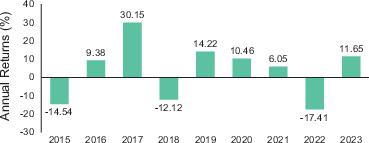
| |
One Year |
Five Years |
Since Inception ( |
| Return Before Taxes |
|
|
|
| Return After Taxes on Distributions |
|
|
|
| Return After Taxes on Distributions and Sale of Fund Shares |
|
|
|
| MSCI Emerging Markets Factor Mix A-Series Index (reflects no deduction for fees, expenses or taxes other than withholding taxes on reinvested dividends) |
|
|
|
| MSCI ACWI ex USA Index (reflects no deduction for fees, expenses or taxes other than withholding taxes on reinvested dividends) |
|
|
|
Investment Objective |
| The SPDR MSCI World StrategicFactorsSM ETF (the “Fund”) seeks to provide investment results that, before |
| Management fees |
|
| Distribution and service (12b-1) fees |
|
| Other expenses1 |
|
| Total annual Fund operating expenses1 |
|
| Year 1 |
Year 3 |
Year 5 |
Year 10 |
| $ |
$ |
$ |
$ |
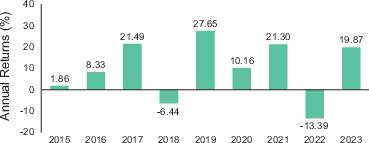
| |
One Year |
Five Years |
Since Inception ( |
| Return Before Taxes |
|
|
|
| Return After Taxes on Distributions |
|
|
|
| Return After Taxes on Distributions and Sale of Fund Shares |
|
|
|
| MSCI World Factor Mix A-Series Index (reflects no deduction for fees, expenses or taxes other than withholding taxes on reinvested dividends) |
|
|
|
| MSCI ACWI ex USA Index (reflects no deduction for fees, expenses or taxes other than withholding taxes on reinvested dividends) |
|
|
|
Investment Objective |
| The SPDR Portfolio Developed World ex-US ETF (the “Fund”) seeks to provide investment results that, |
| Management fees1 |
|
| Distribution and service (12b-1) fees |
|
| Other expenses |
|
| Total annual Fund operating expenses1 |
|
| Year 1 |
Year 3 |
Year 5 |
Year 10 |
| $ |
$ |
$ |
$ |
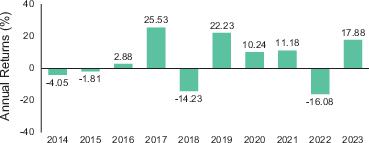
| |
One Year |
Five Years |
Ten Years |
| Return Before Taxes |
|
|
|
| Return After Taxes on Distributions |
|
|
|
| Return After Taxes on Distributions and Sale of Fund Shares |
|
|
|
| S&P Developed Ex-U.S. BMI Index (reflects no deduction for fees, expenses or taxes other than withholding taxes on reinvested dividends) |
|
|
|
| MSCI ACWI ex USA Index (reflects no deduction for fees, expenses or taxes other than withholding taxes on reinvested dividends) |
|
|
|
Investment Objective |
| The SPDR Portfolio Emerging Markets ETF (the “Fund”) seeks to provide investment results that, before |
| Management fees1 |
|
| Distribution and service (12b-1) fees |
|
| Other expenses |
|
| Total annual Fund operating expenses1 |
|
| Year 1 |
Year 3 |
Year 5 |
Year 10 |
| $ |
$ |
$ |
$ |
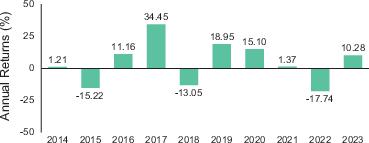
| |
One Year |
Five Years |
Ten Years |
| Return Before Taxes |
|
|
|
| Return After Taxes on Distributions |
|
|
|
| Return After Taxes on Distributions and Sale of Fund Shares |
|
|
|
| S&P Emerging BMI Index (reflects no deduction for fees, expenses or taxes other than withholding taxes on reinvested dividends) |
|
|
|
| MSCI ACWI ex USA Index (reflects no deduction for fees, expenses or taxes other than withholding taxes on reinvested dividends) |
|
|
|
| Investment Objective |
| The SPDR Portfolio Europe ETF (the “Fund”) seeks to provide investment results that, before fees and |
| Management fees1 |
|
| Distribution and service (12b-1) fees |
|
| Other expenses |
|
| Total annual Fund operating expenses1 |
|
| Year 1 |
Year 3 |
Year 5 |
Year 10 |
| $ |
$ |
$ |
$ |
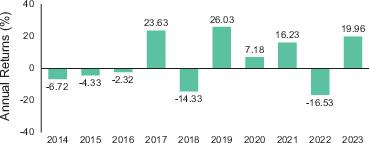
| |
One Year |
Five Years |
Ten Years |
| Return Before Taxes |
|
|
|
| Return After Taxes on Distributions |
|
|
|
| Return After Taxes on Distributions and Sale of Fund Shares |
|
|
|
| STOXX Europe Total Market Index/STOXX Europe 50 Index1 (reflects no deduction for fees, expenses or taxes other than withholding taxes on reinvested dividends) |
|
|
|
| MSCI ACWI ex USA Index (reflects no deduction for fees, expenses or taxes other than withholding taxes on reinvested dividends) |
|
|
|
Investment Objective |
| The SPDR Portfolio MSCI Global Stock Market ETF (the “Fund”) seeks to provide investment results that, |
| Management fees |
|
| Distribution and service (12b-1) fees |
|
| Other expenses |
|
| Total annual Fund operating expenses |
|
| Year 1 |
Year 3 |
Year 5 |
Year 10 |
| $ |
$ |
$ |
$ |
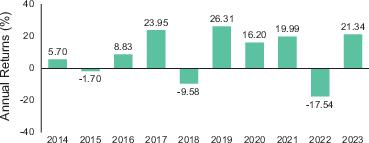
| |
One Year |
Five Years |
Ten Years |
| Return Before Taxes |
|
|
|
| Return After Taxes on Distributions |
|
|
|
| Return After Taxes on Distributions and Sale of Fund Shares |
|
|
|
| MSCI ACWI IMI Index (reflects no deduction for fees, expenses or taxes other than withholding taxes on reinvested dividends) |
|
|
|
| MSCI ACWI ex USA Index (reflects no deduction for fees, expenses or taxes other than withholding taxes on reinvested dividends) |
|
|
|
Investment Objective |
| The SPDR S&P China ETF (the “Fund”) seeks to provide investment results that, before fees and expenses, |
| Management fees |
|
| Distribution and service (12b-1) fees |
|
| Other expenses |
|
| Total annual Fund operating expenses |
|
| Year 1 |
Year 3 |
Year 5 |
Year 10 |
| $ |
$ |
$ |
$ |
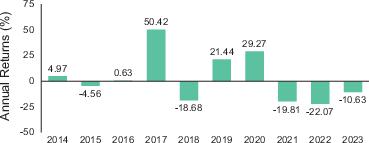
| |
One Year |
Five Years |
Ten Years |
| Return Before Taxes |
- |
- |
|
| Return After Taxes on Distributions |
- |
- |
|
| Return After Taxes on Distributions and Sale of Fund Shares |
- |
- |
|
| S&P China BMI Index (reflects no deduction for fees, expenses or taxes other than withholding taxes on reinvested dividends) |
- |
- |
|
| MSCI ACWI ex USA Index (reflects no deduction for fees, expenses or taxes other than withholding taxes on reinvested dividends) |
|
|
|
Investment Objective |
| The SPDR S&P Emerging Asia Pacific ETF (the “Fund”) seeks to provide investment results that, before |
| Management fees |
|
| Distribution and service (12b-1) fees |
|
| Other expenses |
|
| Total annual Fund operating expenses |
|
| Year 1 |
Year 3 |
Year 5 |
Year 10 |
| $ |
$ |
$ |
$ |
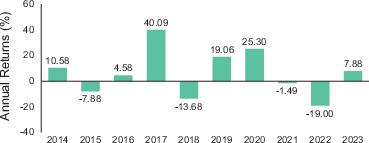
| |
One Year |
Five Years |
Ten Years |
| Return Before Taxes |
|
|
|
| Return After Taxes on Distributions |
|
|
|
| Return After Taxes on Distributions and Sale of Fund Shares |
|
|
|
| S&P Emerging Asia Pacific BMI Index (reflects no deduction for fees, expenses or taxes other than withholding taxes on reinvested dividends) |
|
|
|
| MSCI ACWI ex USA Index (reflects no deduction for fees, expenses or taxes other than withholding taxes on reinvested dividends) |
|
|
|
Investment Objective |
| |
| Management fees |
|
| Distribution and service (12b-1) fees |
|
| Other expenses |
|
| Total annual Fund operating expenses |
|
| Year 1 |
Year 3 |
Year 5 |
Year 10 |
| $ |
$ |
$ |
$ |
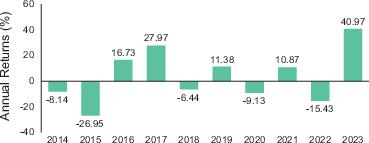
| |
One Year |
Five Years |
Ten Years |
| Return Before Taxes |
|
|
|
| Return After Taxes on Distributions |
|
|
|
| Return After Taxes on Distributions and Sale of Fund Shares |
|
|
|
| S&P Emerging Markets Dividend Opportunities Index (reflects no deduction for fees, expenses or taxes other than withholding taxes on reinvested dividends) |
|
|
|
| MSCI ACWI ex USA Index (reflects no deduction for fees, expenses or taxes other than withholding taxes on reinvested dividends) |
|
|
|
Investment Objective |
| |
| Management fees |
|
| Distribution and service (12b-1) fees |
|
| Other expenses |
|
| Total annual Fund operating expenses |
|
| Year 1 |
Year 3 |
Year 5 |
Year 10 |
| $ |
$ |
$ |
$ |
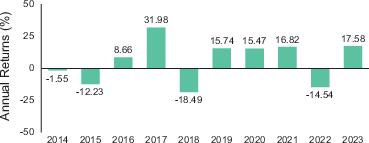
| |
One Year |
Five Years |
Ten Years |
| Return Before Taxes |
|
|
|
| Return After Taxes on Distributions |
|
|
|
| Return After Taxes on Distributions and Sale of Fund Shares |
|
|
|
| S&P Emerging Markets Under USD2 Billion Index (reflects no deduction for fees, expenses or taxes other than withholding taxes on reinvested dividends) |
|
|
|
| MSCI ACWI ex USA Index (reflects no deduction for fees, expenses or taxes other than withholding taxes on reinvested dividends) |
|
|
|
Investment Objective |
| |
| Management fees |
|
| Distribution and service (12b-1) fees |
|
| Other expenses1 |
|
| Total annual Fund operating expenses1 |
|
| Year 1 |
Year 3 |
Year 5 |
Year 10 |
| $ |
$ |
$ |
$ |
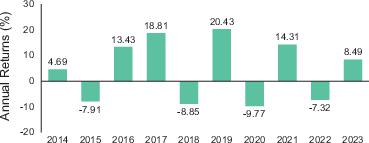
| |
One Year |
Five Years |
Ten Years |
| Return Before Taxes |
|
|
|
| Return After Taxes on Distributions |
|
|
|
| Return After Taxes on Distributions and Sale of Fund Shares |
|
|
|
| S&P Global Dividend Aristocrats Index (reflects no deduction for fees, expenses or taxes other than withholding taxes on reinvested dividends) |
|
|
|
| MSCI ACWI IMI Index (reflects no deduction for fees, expenses or taxes other than withholding taxes on reinvested dividends) |
|
|
|
Investment Objective |
| |
| Management fees |
|
| Distribution and service (12b-1) fees |
|
| Other expenses |
|
| Total annual Fund operating expenses |
|
| Year 1 |
Year 3 |
Year 5 |
Year 10 |
| $ |
$ |
$ |
$ |
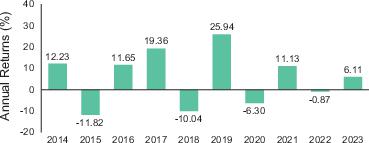
| |
One Year |
Five Years |
Ten Years |
| Return Before Taxes |
|
|
|
| Return After Taxes on Distributions |
|
|
|
| Return After Taxes on Distributions and Sale of Fund Shares |
|
|
|
| S&P Global Infrastructure Index (reflects no deduction for fees, expenses or taxes other than withholding taxes on reinvested dividends) |
|
|
|
| MSCI ACWI IMI Index (reflects no deduction for fees, expenses or taxes other than withholding taxes on reinvested dividends) |
|
|
|
Investment Objective |
| |
| Management fees |
|
| Distribution and service (12b-1) fees |
|
| Other expenses |
|
| Total annual Fund operating expenses |
|
| Year 1 |
Year 3 |
Year 5 |
Year 10 |
| $ |
$ |
$ |
$ |
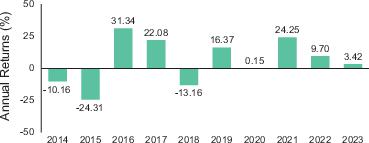
| |
One Year |
Five Years |
Ten Years |
| Return Before Taxes |
|
|
|
| Return After Taxes on Distributions |
|
|
|
| Return After Taxes on Distributions and Sale of Fund Shares |
|
|
|
| S&P Global Natural Resources Index (reflects no deduction for fees, expenses or taxes other than withholding taxes on reinvested dividends) |
|
|
|
| MSCI ACWI IMI Index (reflects no deduction for fees, expenses or taxes other than withholding taxes on reinvested dividends) |
|
|
|
| Investment Objective |
| |
| Management fees |
|
| Distribution and service (12b-1) fees |
|
| Other expenses1 |
|
| Total annual Fund operating expenses1 |
|
| Year 1 |
Year 3 |
Year 5 |
Year 10 |
| $ |
$ |
$ |
$ |
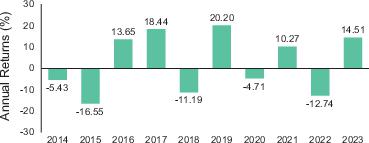
| |
One Year |
Five Years |
Ten Years |
| Return Before Taxes |
|
|
|
| Return After Taxes on Distributions |
|
|
|
| Return After Taxes on Distributions and Sale of Fund Shares |
|
|
|
| S&P International Dividend Opportunities Index (reflects no deduction for fees, expenses or taxes other than withholding taxes on reinvested dividends) |
|
|
|
| MSCI ACWI ex USA Index (reflects no deduction for fees, expenses or taxes other than withholding taxes on reinvested dividends) |
|
|
|
| Investment Objective |
| |
| Management fees |
|
| Distribution and service (12b-1) fees |
|
| Other expenses1 |
|
| Total annual Fund operating expenses1 |
|
| Year 1 |
Year 3 |
Year 5 |
Year 10 |
| $ |
$ |
$ |
$ |
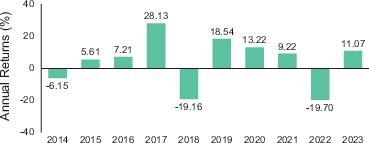
| |
One Year |
Five Years |
Ten Years |
| Return Before Taxes |
|
|
|
| Return After Taxes on Distributions |
|
|
|
| Return After Taxes on Distributions and Sale of Fund Shares |
|
|
|
| S&P Developed Ex-U.S. Under USD2 Billion Index (reflects no deduction for fees, expenses or taxes other than withholding taxes on reinvested dividends) |
|
|
|
| MSCI ACWI ex USA Index (reflects no deduction for fees, expenses or taxes other than withholding taxes on reinvested dividends) |
|
|
|
| Investment Objective |
| |
| Management fees |
|
| Distribution and service (12b-1) fees |
|
| Other expenses |
|
| Total annual Fund operating expenses |
|
| Year 1 |
Year 3 |
Year 5 |
Year 10 |
| $ |
$ |
$ |
$ |
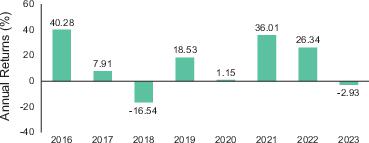
| |
One Year |
Five Years |
Since Inception ( |
| Return Before Taxes |
- |
|
|
| Return After Taxes on Distributions |
- |
|
|
| Return After Taxes on Distributions and Sale of Fund Shares |
- |
|
|
| S&P BMI North American Natural Resources Index (reflects no deduction for fees, expenses or taxes other than withholding taxes on reinvested dividends) |
- |
|
|
| MSCI ACWI IMI Index (reflects no deduction for fees, expenses or taxes other than withholding taxes on reinvested dividends) |
|
|
|
| Agriculture Companies Risk |
|
|
|
|
|
|
|
| Concentration Risk |
X |
X |
|
|
|
|
|
| Consumer Discretionary Sector Risk |
|
|
X |
|
|
|
|
| Consumer Services Sector Risk |
|
|
|
|
X |
|
|
| Counterparty Risk |
X |
X |
X |
X |
X |
X |
X |
| Currency Risk |
X |
X |
X |
X |
X |
X |
X |
| Depositary Receipts Risk |
X |
X |
|
X |
X |
X |
X |
| Derivatives Risk |
X |
X |
X |
X |
X |
X |
X |
| Futures Contract Risk |
X |
X |
X |
X |
X |
X |
X |
| Dividend Paying Securities Risk |
|
|
|
|
|
|
|
| Emerging Markets Risk |
X |
X |
|
X |
X |
|
|
| Energy Sector Risk |
|
|
|
|
|
|
|
| Equity Investing Risk |
X |
X |
X |
X |
X |
X |
X |
| ESG Investing Risk |
|
|
|
X |
|
|
|
| Financial Sector Risk |
|
|
X |
|
X |
X |
X |
| Fluctuation of Net Asset Value, Share Premiums and Discounts Risk |
X |
X |
X |
X |
X |
X |
X |
| Fossil Fuel Reserves Free Ownership Risk |
|
|
|
|
|
X |
|
| Geographic Focus Risk |
X |
X |
X |
X |
X |
X |
X |
| Asia |
|
|
|
|
|
|
X |
| Asia-Pacific Region |
|
|
|
|
|
|
|
| Australasia |
|
|
|
|
|
|
X |
| Canada |
|
|
|
|
|
|
|
| China |
|
|
|
|
|
|
|
| Europe |
X |
|
X |
|
X |
X |
X |
| France |
|
|
|
|
|
|
|
| India |
|
|
|
|
|
|
|
| Japan |
|
X |
|
|
|
X |
X |
| Taiwan |
|
|
|
|
|
|
|
| United Kingdom |
|
|
|
|
|
|
X |
| Health Care Sector Risk |
|
|
|
|
|
|
X |
| Indexing Strategy/Index Tracking Risk |
X |
X |
X |
X |
X |
X |
X |
| Industrial Sector Risk |
|
|
X |
|
|
X |
|
| Infrastructure-Related Companies Risk |
|
|
|
|
|
|
|
| Large-Capitalization Securities Risk |
|
|
X |
X |
X |
X |
X |
| Leveraging Risk |
X |
X |
X |
X |
X |
X |
X |
| Liquidity Risk |
X |
X |
X |
X |
X |
X |
X |
| Low Volatility Risk |
|
|
|
|
|
|
X |
| Market Risk |
X |
X |
X |
X |
X |
X |
X |
| Materials Sector Risk |
|
|
|
|
|
|
|
| Metals and Mining Companies Risk |
|
|
|
|
|
|
|
| Mid-Capitalization Securities Risk |
|
|
|
X |
X |
X |
X |
| Natural Resources and Commodities Risk |
|
|
|
|
|
|
|
| Non-Diversification Risk |
|
|
|
X |
X |
X |
X |
| Non-U.S. Securities Risk |
X |
X |
X |
X |
X |
X |
X |
| Quality Risk |
|
|
|
|
|
|
X |
| Real Estate Sector Risk |
X |
X |
|
|
|
|
|
| REIT Risk |
X |
X |
|
|
|
|
|
| Settlement Risk |
X |
X |
X |
X |
X |
X |
X |
| Small-Capitalization Securities Risk |
|
|
|
|
|
|
|
| Technology Sector Risk |
|
|
|
X |
|
|
|
| Transportation Companies Risk |
|
|
|
|
|
|
|
| Unconstrained Sector Risk |
|
|
X |
X |
X |
X |
X |
| Utilities Sector Risk |
|
|
|
|
|
|
|
| Valuation Risk |
X |
X |
|
X |
X |
X |
X |
| Value Stock Risk |
|
|
|
|
|
|
X |
| Agriculture Companies Risk |
|
|
|
|
|
|
|
|
|
| Concentration Risk |
|
|
|
|
|
|
|
|
|
| Consumer Discretionary Sector Risk |
|
|
|
|
|
|
|
X |
|
| Consumer Services Sector Risk |
|
|
|
|
|
|
|
X |
|
| Counterparty Risk |
X |
X |
X |
X |
X |
X |
X |
X |
X |
| Currency Risk |
X |
X |
X |
X |
X |
X |
X |
X |
X |
| Depositary Receipts Risk |
X |
X |
X |
X |
X |
|
X |
X |
X |
| Derivatives Risk |
X |
X |
X |
X |
X |
X |
X |
X |
X |
| Futures Contract Risk |
X |
X |
X |
X |
X |
X |
X |
X |
X |
| Dividend Paying Securities Risk |
|
|
|
|
|
|
|
|
|
| Emerging Markets Risk |
X |
X |
|
|
X |
|
X |
X |
X |
| Energy Sector Risk |
|
|
|
|
|
|
|
|
|
| Equity Investing Risk |
X |
X |
X |
X |
X |
X |
X |
X |
X |
| ESG Investing Risk |
|
|
|
|
|
|
|
|
|
| Financial Sector Risk |
X |
X |
X |
X |
X |
X |
X |
|
X |
| Fluctuation of Net Asset Value, Share Premiums and Discounts Risk |
X |
X |
X |
X |
X |
X |
X |
X |
X |
| Fossil Fuel Reserves Free Ownership Risk |
X |
|
|
|
|
|
|
|
|
| Geographic Focus Risk |
X |
X |
X |
X |
X |
X |
X |
X |
X |
| Asia |
|
|
|
|
|
|
|
|
|
| Asia-Pacific Region |
|
|
|
|
|
|
|
|
X |
| Australasia |
|
|
|
|
|
|
|
|
|
| Canada |
|
|
|
|
|
|
|
|
|
| China |
X |
X |
|
|
X |
|
|
X |
X |
| Europe |
|
|
|
X |
|
X |
|
|
|
| France |
|
|
|
|
|
X |
|
|
|
| India |
|
X |
|
|
X |
|
|
|
X |
| Japan |
|
|
|
X |
|
|
|
|
|
| Taiwan |
|
|
|
|
|
|
|
|
X |
| United Kingdom |
|
|
|
|
|
X |
|
|
|
| Health Care Sector Risk |
|
|
X |
|
|
|
|
|
|
| Indexing Strategy/Index Tracking Risk |
X |
X |
X |
X |
X |
X |
X |
X |
X |
| Industrial Sector Risk |
|
|
|
X |
|
X |
|
|
|
| Infrastructure-Related Companies Risk |
|
|
|
|
|
|
|
|
|
| Large-Capitalization Securities Risk |
X |
X |
X |
|
|
X |
|
|
|
| Leveraging Risk |
X |
X |
X |
X |
X |
X |
X |
X |
X |
| Liquidity Risk |
X |
X |
X |
X |
X |
X |
X |
X |
X |
| Low Volatility Risk |
|
X |
X |
|
|
|
|
|
|
| Market Risk |
X |
X |
X |
X |
X |
X |
X |
X |
X |
| Materials Sector Risk |
|
|
|
|
|
|
|
|
|
| Metals and Mining Companies Risk |
|
|
|
|
|
|
|
|
|
| Mid-Capitalization Securities Risk |
X |
X |
X |
|
|
|
|
|
|
| Natural Resources and Commodities Risk |
|
|
|
|
|
|
|
|
|
| Non-Diversification Risk |
X |
X |
X |
X |
X |
X |
X |
X |
X |
| Non-U.S. Securities Risk |
X |
X |
X |
X |
X |
X |
X |
X |
X |
| Quality Risk |
|
X |
X |
|
|
|
|
|
|
| Real Estate Sector Risk |
|
|
|
|
|
|
|
|
|
| REIT Risk |
|
|
|
|
|
|
|
|
|
| Settlement Risk |
X |
X |
X |
X |
X |
X |
X |
X |
X |
| Small-Capitalization Securities Risk |
|
|
|
|
|
|
|
|
|
| Technology Sector Risk |
X |
X |
X |
|
|
|
X |
|
X |
| Transportation Companies Risk |
|
|
|
|
|
|
|
|
|
| Unconstrained Sector Risk |
X |
X |
X |
X |
X |
X |
X |
X |
X |
| Utilities Sector Risk |
|
|
|
|
|
|
|
|
|
| Agriculture Companies Risk |
|
|
|
|
X |
|
|
X |
| Concentration Risk |
|
|
|
X |
X |
|
|
X |
| Consumer Discretionary Sector Risk |
|
|
|
|
|
|
|
|
| Consumer Services Sector Risk |
|
|
|
|
|
|
|
|
| Counterparty Risk |
X |
X |
X |
X |
X |
X |
X |
X |
| Currency Risk |
X |
X |
X |
X |
X |
X |
X |
X |
| Depositary Receipts Risk |
X |
X |
X |
X |
X |
X |
X |
X |
| Derivatives Risk |
X |
X |
X |
X |
X |
X |
X |
X |
| Futures Contract Risk |
X |
X |
X |
X |
X |
X |
X |
X |
| Dividend Paying Securities Risk |
X |
|
X |
|
|
X |
|
|
| Emerging Markets Risk |
X |
X |
X |
X |
X |
X |
|
|
| Energy Sector Risk |
|
|
|
X |
X |
|
|
X |
| Equity Investing Risk |
X |
X |
X |
X |
X |
X |
X |
X |
| ESG Investing Risk |
|
|
|
|
|
|
|
|
| Financial Sector Risk |
X |
|
X |
|
|
|
|
|
| Fluctuation of Net Asset Value, Share Premiums and Discounts Risk |
X |
X |
X |
X |
X |
X |
X |
X |
| Fossil Fuel Reserves Free Ownership Risk |
|
|
|
|
|
|
|
|
| Geographic Focus Risk |
X |
X |
X |
X |
X |
X |
X |
X |
| Asia |
|
|
|
|
|
|
|
|
| Asia-Pacific Region |
|
|
|
|
|
|
|
|
| Australasia |
|
|
|
|
|
|
|
|
| Canada |
|
|
X |
|
|
|
|
X |
| China |
X |
X |
|
|
|
|
|
|
| Europe |
|
|
|
X |
|
X |
|
|
| France |
|
|
|
|
|
|
|
|
| India |
|
X |
|
|
|
|
|
|
| Japan |
|
|
X |
|
|
X |
X |
|
| Taiwan |
X |
X |
|
|
|
|
|
|
| United Kingdom |
|
|
|
|
X |
|
|
|
| Health Care Sector Risk |
|
|
|
|
|
|
|
|
| Indexing Strategy/Index Tracking Risk |
X |
X |
X |
X |
X |
X |
X |
X |
| Industrial Sector Risk |
|
X |
|
|
|
|
X |
|
| Infrastructure-Related Companies Risk |
|
|
|
X |
|
|
|
|
| Large-Capitalization Securities Risk |
|
|
|
|
|
|
|
X |
| Leveraging Risk |
X |
X |
X |
X |
X |
X |
X |
X |
| Liquidity Risk |
X |
X |
X |
X |
X |
X |
X |
X |
| Low Volatility Risk |
|
|
|
|
|
|
|
|
| Market Risk |
X |
X |
X |
X |
X |
X |
X |
X |
| Materials Sector Risk |
|
|
|
|
|
|
|
X |
| Metals and Mining Companies Risk |
|
|
|
|
X |
|
|
X |
| Mid-Capitalization Securities Risk |
|
|
|
|
|
|
|
X |
| Natural Resources and Commodities Risk |
|
|
|
|
X |
|
|
X |
| Non-Diversification Risk |
X |
X |
X |
|
|
X |
X |
X |
| Non-U.S. Securities Risk |
X |
X |
X |
X |
X |
X |
X |
X |
| Quality Risk |
|
|
|
|
|
|
|
|
| Real Estate Sector Risk |
|
|
|
|
|
|
|
|
| REIT Risk |
|
|
|
|
|
|
|
|
| Settlement Risk |
X |
X |
X |
X |
X |
X |
X |
X |
| Small-Capitalization Securities Risk |
|
X |
|
|
|
|
X |
|
| Technology Sector Risk |
X |
X |
|
|
|
|
|
|
| Transportation Companies Risk |
|
|
|
X |
|
|
|
|
| Unconstrained Sector Risk |
X |
X |
X |
|
|
X |
X |
|
| Utilities Sector Risk |
X |
|
|
X |
|
X |
|
|
| Valuation Risk |
X |
X |
X |
X |
X |
X |
X |
X |
| Value Stock Risk |
|
|
|
|
|
|
|
|
| SPDR Dow Jones Global Real Estate ETF |
0.50 % |
| SPDR Dow Jones International Real Estate ETF |
0.59 % |
| SPDR EURO STOXX 50 ETF |
0.29 % |
| SPDR MSCI ACWI Climate Paris Aligned ETF |
0.12 % |
| SPDR MSCI ACWI ex-US ETF |
0.30 % |
| SPDR MSCI EAFE Fossil Fuel Reserves Free ETF |
0.20 % |
| SPDR MSCI EAFE StrategicFactors ETF |
0.30 % |
| SPDR MSCI Emerging Markets Fossil Fuel Reserves Free ETF |
0.30 % |
| SPDR MSCI Emerging Markets StrategicFactors ETF |
0.30 % |
| SPDR MSCI World StrategicFactors ETF |
0.30 % |
| SPDR Portfolio Developed World ex-US ETF |
0.04 %(1) |
| SPDR Portfolio Emerging Markets ETF |
0.11 %(2) |
| SPDR Portfolio Europe ETF |
0.09 %(3) |
| SPDR Portfolio MSCI Global Stock Market ETF |
0.09 % |
| SPDR S&P China ETF |
0.59 % |
| SPDR S&P Emerging Asia Pacific ETF |
0.49 % |
| SPDR S&P Emerging Markets Dividend ETF |
0.49 % |
| SPDR S&P Emerging Markets Small Cap ETF |
0.65 % |
| SPDR S&P Global Dividend ETF |
0.40 % |
| SPDR S&P Global Infrastructure ETF |
0.40 % |
| SPDR S&P Global Natural Resources ETF |
0.40 % |
| SPDR S&P International Dividend ETF |
0.45 % |
| SPDR S&P International Small Cap ETF |
0.40 % |
| SPDR S&P North American Natural Resources ETF |
0.35 % |
The Adviser manages the Funds using a team of investment professionals. The team approach is used to create an environment that encourages the flow of investment ideas. The portfolio managers within each team work together in a cohesive manner to develop and enhance techniques that drive the investment process for the respective investment strategy. This approach requires portfolio managers to share a variety of responsibilities, including investment strategy and analysis, while retaining responsibility for the implementation of the strategy within any particular portfolio. The approach also enables the team to draw upon the resources of other groups within SSGA. Each portfolio management team is overseen by the SSGA Investment Committee.
| Portfolio Management Team |
Fund |
| Karl Schneider, Kala O'Donnell and Olga Winner |
SPDR Portfolio Developed World ex-US ETF |
| Karl Schneider, Juan Acevedo and Thomas Coleman |
SPDR S&P China ETF |
| Karl Schneider and Juan Acevedo |
SPDR MSCI World StrategicFactors ETF |
| Karl Schneider and Amy Cheng |
SPDR S&P Emerging Markets Small Cap ETF |
| Karl Schneider and David Chin |
SPDR S&P Global Natural Resources ETF |
| Karl Schneider and Thomas Coleman |
SPDR MSCI ACWI Climate Paris Aligned ETF |
| Karl Schneider and Michael Finocchi |
SPDR S&P Global Infrastructure ETF, SPDR MSCI ACWI ex-US ETF |
| Karl Schneider and Dwayne Hancock |
SPDR Portfolio Emerging Markets ETF |
| Karl Schneider and Lisa Hobart |
SPDR MSCI EAFE StrategicFactors ETF |
| Karl Schneider and Ted Janowsky |
SPDR S&P International Dividend ETF |
| Karl Schneider and Mark Krivitsky |
SPDR EURO STOXX 50 ETF, SPDR Portfolio Europe ETF |
| Karl Schneider and John Law |
SPDR MSCI EAFE Fossil Fuel Reserves Free ETF, SPDR MSCI Emerging Markets StrategicFactors ETF |
| Karl Schneider and Kala O'Donnell |
SPDR MSCI Emerging Markets Fossil Fuel Reserves Free ETF |
| Karl Schneider, Emiliano Rabinovich and Olga Winner |
SPDR S&P North American Natural Resources ETF |
| Karl Schneider and Keith Richardson |
SPDR Dow Jones Global Real Estate ETF, SPDR Dow Jones International Real Estate ETF, SPDR Portfolio MSCI Global Stock Market ETF |
| Karl Schneider and Amy Scofield |
SPDR S&P Global Dividend ETF |
| Karl Schneider and Olga Winner |
SPDR S&P Emerging Markets Dividend ETF |
| Karl Schneider and Teddy Wong |
SPDR S&P Emerging Asia Pacific ETF, SPDR S&P International Small Cap ETF |
| |
SPDR Dow Jones Global Real Estate ETF | ||||
| |
Year Ended 9/30/23 |
Year Ended 9/30/22 |
Year Ended 9/30/21 |
Year Ended 9/30/20 |
Year Ended 9/30/19(a) |
| Net asset value, beginning of period |
$38.66 |
$51.09 |
$39.46 |
$51.86 |
$47.58 |
| Income (loss) from investment operations: |
|
|
|
|
|
| Net investment income (loss) (b) |
1.27 |
1.07 |
1.20 |
1.17 |
1.42 |
| Net realized and unrealized gain (loss) (c) |
(0.23 ) |
(11.76 ) |
11.86 |
(11.73 ) |
4.50 |
| Total from investment operations |
1.04 |
(10.69 ) |
13.06 |
(10.56 ) |
5.92 |
| Net equalization credits and charges (b) |
— |
— |
— |
— |
(0.02 ) |
| Other capital |
0.00(d ) |
0.00(d ) |
— |
0.00(d ) |
— |
| Distributions to shareholders from: |
|
|
|
|
|
| Net investment income |
(1.49 ) |
(1.74 ) |
(1.43 ) |
(1.84 ) |
(1.62 ) |
| Net asset value, end of period |
$38.21 |
$38.66 |
$51.09 |
$39.46 |
$51.86 |
| Total return (e) |
2.61 % |
(21.53 )% |
33.36 % |
(20.65 )% |
12.68 % |
| Ratios and Supplemental Data: |
|
|
|
|
|
| Net assets, end of period (in 000s) |
$1,109,880 |
$1,067,005 |
$1,622,027 |
$1,463,802 |
$2,219,749 |
| Ratios to average net assets: |
|
|
|
|
|
| Total expenses |
0.51 % |
0.50 % |
0.50 % |
0.50 % |
0.50 % |
| Net investment income (loss) |
3.07 % |
2.12 % |
2.51 % |
2.63 % |
2.92 % |
| Portfolio turnover rate (f) |
5 % |
11 % |
6 % |
18 % |
7 % |
| (a) |
Beginning with the year ended September 30, 2020, the Fund was audited by Ernst & Young LLP. The previous years were audited by another independent registered public accounting firm. |
| (b) |
Per share numbers have been calculated using average shares outstanding, which more appropriately presents the per share data for the year. |
| (c) |
Amounts shown in this caption for a share outstanding may not accord with the change in aggregate gains and losses in securities for the fiscal period because of the timing of sales and repurchases of Fund shares in relation to fluctuating market values for the Fund. |
| (d) |
Amount is less than $0.005 per share. |
| (e) |
Total return is calculated assuming a purchase of shares at net asset value on the first day and a sale at net asset value on the last day of each period reported. Distributions are assumed, for the purpose of this calculation, to be reinvested at net asset value per share on the respective payment dates of each distribution. Total returns for periods of less than one year are not annualized. Broker commission charges are not included in this calculation. |
| (f) |
Portfolio turnover rate excludes securities received or delivered from in-kind processing of creations or redemptions. |
| |
SPDR Dow Jones International Real Estate ETF | ||||
| |
Year Ended 9/30/23 |
Year Ended 9/30/22 |
Year Ended 9/30/21 |
Year Ended 9/30/20 |
Year Ended 9/30/19(a) |
| Net asset value, beginning of period |
$24.18 |
$35.70 |
$29.69 |
$39.47 |
$38.32 |
| Income (loss) from investment operations: |
|
|
|
|
|
| Net investment income (loss) (b) |
0.98 |
1.04 |
1.26 |
0.91 |
1.12 |
| Net realized and unrealized gain (loss) (c) |
(0.08 ) |
(10.83 ) |
5.70 |
(7.44 ) |
1.51 |
| Total from investment operations |
0.90 |
(9.79 ) |
6.96 |
(6.53 ) |
2.63 |
| Net equalization credits and charges (b) |
— |
— |
— |
— |
0.41 |
| Other capital |
0.00(d ) |
0.00(d ) |
0.00(d ) |
0.00(d ) |
0.00(d ) |
| Distributions to shareholders from: |
|
|
|
|
|
| Net investment income |
(1.23 ) |
(1.73 ) |
(0.95 ) |
(3.25 ) |
(1.89 ) |
| Net asset value, end of period |
$23.85 |
$24.18 |
$35.70 |
$29.69 |
$39.47 |
| Total return (e) |
3.71 % |
(28.54 )% |
23.46 % |
(17.76 )% |
8.31 % |
| Ratios and Supplemental Data: |
|
|
|
|
|
| Net assets, end of period (in 000s) |
$308,545 |
$461,443 |
$890,202 |
$845,809 |
$2,093,103 |
| Ratios to average net assets: |
|
|
|
|
|
| Total expenses |
0.60 % |
0.59 % |
0.59 % |
0.59 % |
0.59 % |
| Net investment income (loss) |
3.76 % |
3.20 % |
3.61 % |
2.64 % |
2.93 % |
| Portfolio turnover rate (f) |
6 % |
14 % |
8 % |
14 % |
9 % |
| (a) |
Beginning with the year ended September 30, 2020, the Fund was audited by Ernst & Young LLP. The previous years were audited by another independent registered public accounting firm. |
| (b) |
Per share numbers have been calculated using average shares outstanding, which more appropriately presents the per share data for the year. |
| (c) |
Amounts shown in this caption for a share outstanding may not accord with the change in aggregate gains and losses in securities for the fiscal period because of the timing of sales and repurchases of Fund shares in relation to fluctuating market values for the Fund. |
| (d) |
Amount is less than $0.005 per share. |
| (e) |
Total return is calculated assuming a purchase of shares at net asset value on the first day and a sale at net asset value on the last day of each period reported. Distributions are assumed, for the purpose of this calculation, to be reinvested at net asset value per share on the respective payment dates of each distribution. Total returns for periods of less than one year are not annualized. Broker commission charges are not included in this calculation. |
| (f) |
Portfolio turnover rate excludes securities received or delivered from in-kind processing of creations or redemptions. |
| |
SPDR EURO STOXX 50 ETF | ||||
| |
Year Ended 9/30/23 |
Year Ended 9/30/22 |
Year Ended 9/30/21 |
Year Ended 9/30/20 |
Year Ended 9/30/19(a) |
| Net asset value, beginning of period |
$31.10 |
$45.45 |
$36.40 |
$37.79 |
$38.35 |
| Income (loss) from investment operations: |
|
|
|
|
|
| Net investment income (loss) (b) |
1.47 |
1.30 |
1.06 |
0.81 |
1.02 |
| Net realized and unrealized gain (loss) (c) |
10.99 |
(13.98 ) |
8.77 |
(1.46 ) |
(0.49 ) |
| Total from investment operations |
12.46 |
(12.68 ) |
9.83 |
(0.65 ) |
0.53 |
| Net equalization credits and charges (b) |
0.01 |
(0.08 ) |
0.12 |
(0.00 )(d) |
(0.01 ) |
| Other capital |
— |
0.00(d ) |
— |
— |
— |
| Distributions to shareholders from: |
|
|
|
|
|
| Net investment income |
(1.36 ) |
(1.59 ) |
(0.90 ) |
(0.74 ) |
(1.08 ) |
| Net asset value, end of period |
$42.21 |
$31.10 |
$45.45 |
$36.40 |
$37.79 |
| Total return (e) |
40.03 % |
(28.73 )% |
27.32 % |
(1.65 )% |
1.43 % |
| Ratios and Supplemental Data: |
|
|
|
|
|
| Net assets, end of period (in 000s) |
$2,359,419 |
$1,279,611 |
$2,622,326 |
$1,747,270 |
$2,050,307 |
| Ratios to average net assets: |
|
|
|
|
|
| Total expenses |
0.29 % |
0.30 % |
0.29 % |
0.29 % |
0.29 % |
| Net investment income (loss) |
3.43 % |
3.16 % |
2.39 % |
2.21 % |
2.80 % |
| Portfolio turnover rate (f) |
12 % |
8 % |
11 % |
9 % |
6 % |
| (a) |
Beginning with the year ended September 30, 2020, the Fund was audited by Ernst & Young LLP. The previous years were audited by another independent registered public accounting firm. |
| (b) |
Per share numbers have been calculated using average shares outstanding, which more appropriately presents the per share data for the year. |
| (c) |
Amounts shown in this caption for a share outstanding may not accord with the change in aggregate gains and losses in securities for the fiscal period because of the timing of sales and repurchases of Fund shares in relation to fluctuating market values for the Fund. |
| (d) |
Amount is less than $0.005 per share. |
| (e) |
Total return is calculated assuming a purchase of shares at net asset value on the first day and a sale at net asset value on the last day of each period reported. Distributions are assumed, for the purpose of this calculation, to be reinvested at net asset value per share on the respective payment dates of each distribution. Total returns for periods of less than one year are not annualized. Broker commission charges are not included in this calculation. |
| (f) |
Portfolio turnover rate excludes securities received or delivered from in-kind processing of creations or redemptions. |
| |
SPDR MSCI ACWI Climate Paris Aligned ETF | ||||
| |
Year Ended 9/30/23 |
Year Ended 9/30/22(a) |
Year Ended 9/30/21(a) |
Year Ended 9/30/20(a) |
Year Ended 9/30/19(a)(b) |
| Net asset value, beginning of period |
$24.24 |
$31.40 |
$25.09 |
$23.01 |
$23.05 |
| Income (loss) from investment operations: |
|
|
|
|
|
| Net investment income (loss) (c) |
0.52 |
0.55 |
0.53 |
0.46 |
0.52 |
| Net realized and unrealized gain (loss) (d) |
4.11 |
(6.37 ) |
6.25 |
2.13 |
(0.06 ) |
| Total from investment operations |
4.63 |
(5.82 ) |
6.78 |
2.58 |
0.46 |
| Net equalization credits and charges (c) |
(0.01 ) |
0.14 |
0.02 |
(0.03 ) |
0.01 |
| Other capital |
0.00(e ) |
0.00(e ) |
0.00(e ) |
0.00 |
0.00(e ) |
| Distributions to shareholders from: |
|
|
|
|
|
| Net investment income |
(0.51 ) |
(1.48 ) |
(0.49 ) |
(0.48 ) |
(0.51 ) |
| Net asset value, end of period |
$28.35 |
$24.24 |
$31.40 |
$25.09 |
$23.01 |
| Total return (f) |
19.07 % |
(21.38 )% |
27.23 % |
11.18 % |
2.25 % |
| Ratios and Supplemental Data: |
|
|
|
|
|
| Net assets, end of period (in 000s) |
$232,440 |
$206,007 |
$113,024 |
$70,239 |
$82,838 |
| Ratios to average net assets: |
|
|
|
|
|
| Total expenses |
0.13 % |
0.16 % |
0.24 % |
0.30 % |
0.30 % |
| Net expenses |
0.13 % |
0.16 % |
0.20 % |
0.20 % |
0.20 % |
| Net investment income (loss) |
1.86 % |
1.89 % |
1.75 % |
1.95 % |
2.39 % |
| Portfolio turnover rate (g) |
12 % |
32 % |
10 % |
10 % |
15 % |
| (a) |
Effective on April 22, 2022, the SPDR MSCI ACWI Climate Paris Aligned ETF underwent a 4-for-1 share split. The per share activity presented here has been retroactively adjusted to reflect this split. (Note 12) |
| (b) |
Beginning with the year ended September 30, 2020, the Fund was audited by Ernst & Young LLP. The previous years were audited by another independent registered public accounting firm. |
| (c) |
Per share numbers have been calculated using average shares outstanding, which more appropriately presents the per share data for the year. |
| (d) |
Amounts shown in this caption for a share outstanding may not accord with the change in aggregate gains and losses in securities for the fiscal period because of the timing of sales and repurchases of Fund shares in relation to fluctuating market values for the Fund. |
| (e) |
Amount is less than $0.005 per share. |
| (f) |
Total return is calculated assuming a purchase of shares at net asset value on the first day and a sale at net asset value on the last day of each period reported. Distributions are assumed, for the purpose of this calculation, to be reinvested at net asset value per share on the respective payment dates of each distribution. Total returns for periods of less than one year are not annualized. Broker commission charges are not included in this calculation. |
| (g) |
Portfolio turnover rate excludes securities received or delivered from in-kind processing of creations or redemptions. |
| |
SPDR MSCI ACWI ex-US ETF | ||||
| |
Year Ended 9/30/23 |
Year Ended 9/30/22 |
Year Ended 9/30/21 |
Year Ended 9/30/20 |
Year Ended 9/30/19(a)(b) |
| Net asset value, beginning of period |
$21.34 |
$29.15 |
$24.01 |
$24.08 |
$24.97 |
| Income (loss) from investment operations: |
|
|
|
|
|
| Net investment income (loss) (c) |
0.72 |
0.77 |
0.71 |
0.54 |
0.76 |
| Net realized and unrealized gain (loss) (d) |
3.70 |
(7.71 ) |
5.05 |
0.06 |
(0.95 ) |
| Total from investment operations |
4.42 |
(6.94 ) |
5.76 |
0.60 |
(0.19 ) |
| Other capital |
0.00(e ) |
0.00(e ) |
0.00(e ) |
0.00(e ) |
0.00(e ) |
| Distributions to shareholders from: |
|
|
|
|
|
| Net investment income |
(0.76 ) |
(0.87 ) |
(0.62 ) |
(0.67 ) |
(0.70 ) |
| Net asset value, end of period |
$25.00 |
$21.34 |
$29.15 |
$24.01 |
$24.08 |
| Total return |
20.80 % |
(24.46 )% |
23.98 % |
2.44 % |
(0.61 )% |
| Ratios and Supplemental Data: |
|
|
|
|
|
| Net assets, end of period (in 000s) |
$1,442,667 |
$1,320,709 |
$1,763,381 |
$1,270,389 |
$1,683,113 |
| Ratios to average net assets: |
|
|
|
|
|
| Total expenses |
0.30 % |
0.30 % |
0.32 % |
0.34 % |
0.34 % |
| Net expenses |
0.30 % |
0.30 % |
0.30 % |
0.30 % |
0.30 % |
| Net investment income (loss) |
2.85 % |
2.90 % |
2.48 % |
2.26 % |
3.20 % |
| Portfolio turnover rate (f) |
4 % |
2 % |
5 % |
4 % |
3 % |
| (a) |
Beginning with the year ended September 30, 2020, the Fund was audited by Ernst & Young LLP. The previous years were audited by another independent registered public accounting firm. |
| (b) |
On September 20, 2019, the SPDR MSCI ACWI ex-US ETF underwent a 3-for-2 share split. The per share activity presented here has been retroactively adjusted to reflect this split. |
| (c) |
Per share numbers have been calculated using average shares outstanding, which more appropriately presents the per share data for the year. |
| (d) |
Amounts shown in this caption for a share outstanding may not accord with the change in aggregate gains and losses in securities for the fiscal period because of the timing of sales and repurchases of Fund shares in relation to fluctuating market values for the Fund. |
| (e) |
Amount is less than $0.005 per share. |
| (f) |
Portfolio turnover rate excludes securities received or delivered from in-kind processing of creations or redemptions. |
| |
SPDR MSCI EAFE Fossil Fuel Reserves Free ETF | ||||
| |
Year Ended 9/30/23(a) |
Year Ended 9/30/22(a) |
Year Ended 9/30/21(a) |
Year Ended 9/30/20(a) |
Year Ended 9/30/19(a)(b) |
| Net asset value, beginning of period |
$29.33 |
$41.42 |
$33.95 |
$33.67 |
$34.97 |
| Income (loss) from investment operations: |
|
|
|
|
|
| Net investment income (loss) (c) |
0.97 |
1.00 |
1.08 |
0.76 |
0.98 |
| Net realized and unrealized gain (loss) (d) |
6.62 |
(11.96 ) |
7.20 |
0.14 |
(1.34 ) |
| Total from investment operations |
7.59 |
(10.96 ) |
8.28 |
0.90 |
(0.36 ) |
| Net equalization credits and charges (c) |
(0.05 ) |
0.04 |
0.08 |
0.07 |
0.03 |
| Other capital |
0.00(e ) |
0.00(e ) |
0.00(e ) |
0.00(e ) |
— |
| Distributions to shareholders from: |
|
|
|
|
|
| Net investment income |
(1.36 ) |
(1.17 ) |
(0.89 ) |
(0.69 ) |
(0.97 ) |
| Net asset value, end of period |
$35.51 |
$29.33 |
$41.42 |
$33.95 |
$33.67 |
| Total return (f) |
24.61 % |
(27.02 )% |
24.65 % |
2.83 % |
(0.79 )% |
| Ratios and Supplemental Data: |
|
|
|
|
|
| Net assets, end of period (in 000s) |
$223,723 |
$202,335 |
$240,241 |
$122,221 |
$84,177 |
| Ratios to average net assets: |
|
|
|
|
|
| Total expenses |
0.21 % |
0.20 % |
0.24 % |
0.30 % |
0.30 % |
| Net expenses |
0.21 % |
0.20 % |
0.20 % |
0.20 % |
0.20 % |
| Net investment income (loss) |
2.73 % |
2.69 % |
2.66 % |
2.30 % |
2.97 % |
| Portfolio turnover rate (g) |
4 % |
8 % |
6 % |
7 % |
6 % |
| (a) |
Effective on January 12, 2023, the SPDR MSCI EAFE Fossil Fuel Reserves Free ETF underwent a 2-for-1 share split. The per share activity presented here has been retroactively adjusted to reflect this split. (Note 12) |
| (b) |
Beginning with the year ended September 30, 2020, the Fund was audited by Ernst & Young LLP. The previous years were audited by another independent registered public accounting firm. |
| (c) |
Per share numbers have been calculated using average shares outstanding, which more appropriately presents the per share data for the year. |
| (d) |
Amounts shown in this caption for a share outstanding may not accord with the change in aggregate gains and losses in securities for the fiscal period because of the timing of sales and repurchases of Fund shares in relation to fluctuating market values for the Fund. |
| (e) |
Amount is less than $0.005 per share. |
| (f) |
Total return is calculated assuming a purchase of shares at net asset value on the first day and a sale at net asset value on the last day of each period reported. Distributions are assumed, for the purpose of this calculation, to be reinvested at net asset value per share on the respective payment dates of each distribution. Total returns for periods of less than one year are not annualized. Broker commission charges are not included in this calculation. |
| (g) |
Portfolio turnover rate excludes securities received or delivered from in-kind processing of creations or redemptions. |
| |
SPDR MSCI EAFE StrategicFactors ETF | ||||
| |
Year Ended 9/30/23 |
Year Ended 9/30/22 |
Year Ended 9/30/21 |
Year Ended 9/30/20 |
Year Ended 9/30/19(a) |
| Net asset value, beginning of period |
$56.11 |
$75.41 |
$61.74 |
$62.85 |
$64.08 |
| Income (loss) from investment operations: |
|
|
|
|
|
| Net investment income (loss) (b) |
2.07 |
2.09 |
1.94 |
1.43 |
1.84 |
| Net realized and unrealized gain (loss) (c) |
11.07 |
(19.22 ) |
13.19 |
(0.94 ) |
(1.08 ) |
| Total from investment operations |
13.14 |
(17.13 ) |
15.13 |
0.49 |
0.76 |
| Other capital |
0.00(d ) |
0.00(d ) |
0.00(d ) |
0.00(d ) |
0.00(d ) |
| Distributions to shareholders from: |
|
|
|
|
|
| Net investment income |
(1.89 ) |
(2.17 ) |
(1.46 ) |
(1.60 ) |
(1.99 ) |
| Net asset value, end of period |
$67.36 |
$56.11 |
$75.41 |
$61.74 |
$62.85 |
| Total return (e) |
23.45 % |
(23.29 )% |
24.57 % |
0.69 % |
1.39 % |
| Ratios and Supplemental Data: |
|
|
|
|
|
| Net assets, end of period (in 000s) |
$926,198 |
$687,312 |
$810,662 |
$385,852 |
$320,538 |
| Ratios to average net assets: |
|
|
|
|
|
| Total expenses |
0.30 % |
0.30 % |
0.30 % |
0.30 % |
0.30 % |
| Net investment income (loss) |
3.08 % |
3.00 % |
2.65 % |
2.32 % |
3.02 % |
| Portfolio turnover rate (f) |
14 % |
14 % |
13 % |
14 % |
12 % |
| (a) |
Beginning with the year ended September 30, 2020, the Fund was audited by Ernst & Young LLP. The previous years were audited by another independent registered public accounting firm. |
| (b) |
Per share numbers have been calculated using average shares outstanding, which more appropriately presents the per share data for the year. |
| (c) |
Amounts shown in this caption for a share outstanding may not accord with the change in aggregate gains and losses in securities for the fiscal period because of the timing of sales and repurchases of Fund shares in relation to fluctuating market values for the Fund. |
| (d) |
Amount is less than $0.005 per share. |
| (e) |
Total return is calculated assuming a purchase of shares at net asset value on the first day and a sale at net asset value on the last day of each period reported. Distributions are assumed, for the purpose of this calculation, to be reinvested at net asset value per share on the respective payment dates of each distribution. Total returns for periods of less than one year are not annualized. Broker commission charges are not included in this calculation. |
| (f) |
Portfolio turnover rate excludes securities received or delivered from in-kind processing of creations or redemptions. |
| |
SPDR MSCI Emerging Markets Fossil Fuel Reserves Free ETF | ||||
| |
Year Ended 9/30/23(a) |
Year Ended 9/30/22(a) |
Year Ended 9/30/21(a) |
Year Ended 9/30/20(a) |
Year Ended 9/30/19(a)(b) |
| Net asset value, beginning of period |
$26.76 |
$37.46 |
$32.76 |
$29.89 |
$31.36 |
| Income (loss) from investment operations: |
|
|
|
|
|
| Net investment income (loss) (c) |
0.71 |
0.73 |
0.66 |
0.58 |
1.08(d ) |
| Net realized and unrealized gain (loss) (e) |
2.82 |
(10.71 ) |
4.53 |
2.98 |
(2.09 ) |
| Total from investment operations |
3.53 |
(9.98 ) |
5.19 |
3.56 |
(1.01 ) |
| Net equalization credits and charges (c) |
(0.03 ) |
(0.11 ) |
0.04 |
0.16 |
0.14 |
| Other capital |
0.01 |
0.03 |
0.02 |
0.02 |
0.03 |
| Distributions to shareholders from: |
|
|
|
|
|
| Net investment income |
(1.22 ) |
(0.64 ) |
(0.55 ) |
(0.87 ) |
(0.63 ) |
| Net asset value, end of period |
$29.05 |
$26.76 |
$37.46 |
$32.76 |
$29.89 |
| Total return (f) |
11.20 % |
(27.26 )% |
16.00 % |
12.59 % |
(2.62 )%(d) |
| Ratios and Supplemental Data: |
|
|
|
|
|
| Net assets, end of period (in 000s) |
$75,527 |
$85,638 |
$172,318 |
$94,995 |
$71,720 |
| Ratios to average net assets: |
|
|
|
|
|
| Total expenses |
0.30 % |
0.30 % |
0.30 % |
0.30 % |
0.30 % |
| Net investment income (loss) |
2.40 % |
2.12 % |
1.69 % |
1.88 % |
3.54 %(d) |
| Portfolio turnover rate (g) |
9 % |
8 % |
11 % |
17 % |
7 % |
| (a) |
Effective on January 12, 2023, the SPDR MSCI Emerging Markets Fossil Fuel Reserves Free ETF underwent a 2-for-1 share split. The per share activity presented here has been retroactively adjusted to reflect this split. (Note 12) |
| (b) |
Beginning with the year ended September 30, 2020, the Fund was audited by Ernst & Young LLP. The previous years were audited by another independent registered public accounting firm. |
| (c) |
Per share numbers have been calculated using average shares outstanding, which more appropriately presents the per share data for the year. |
| (d) |
Net investment income per share and ratio of net investment income to average net assets reflect receipt of special dividend from portfolio holding. The resulting increase to net investment income amounted to $0.68 per share and 1.13% of average net assets. If the special dividends were not received during the year ended September 30, 2019, the total return would have been (3.73%). |
| (e) |
Amounts shown in this caption for a share outstanding may not accord with the change in aggregate gains and losses in securities for the fiscal period because of the timing of sales and repurchases of Fund shares in relation to fluctuating market values for the Fund. |
| (f) |
Total return is calculated assuming a purchase of shares at net asset value on the first day and a sale at net asset value on the last day of each period reported. Distributions are assumed, for the purpose of this calculation, to be reinvested at net asset value per share on the respective payment dates of each distribution. Total returns for periods of less than one year are not annualized. Broker commission charges are not included in this calculation. |
| (g) |
Portfolio turnover rate excludes securities received or delivered from in-kind processing of creations or redemptions. |
| |
SPDR MSCI Emerging Markets StrategicFactors ETF | ||||
| |
Year Ended 9/30/23 |
Year Ended 9/30/22 |
Year Ended 9/30/21 |
Year Ended 9/30/20 |
Year Ended 9/30/19(a) |
| Net asset value, beginning of period |
$51.37 |
$68.01 |
$56.44 |
$57.51 |
$59.60 |
| Income (loss) from investment operations: |
|
|
|
|
|
| Net investment income (loss) (b) |
2.36 |
2.05 |
1.39 |
1.39 |
1.63 |
| Net realized and unrealized gain (loss) (c) |
3.25 |
(16.91 ) |
11.58 |
(0.70 ) |
(2.02 ) |
| Total from investment operations |
5.61 |
(14.86 ) |
12.97 |
0.69 |
(0.39 ) |
| Other capital |
0.01 |
0.04 |
0.09 |
0.05 |
0.01 |
| Distributions to shareholders from: |
|
|
|
|
|
| Net investment income |
(2.81 ) |
(1.82 ) |
(1.49 ) |
(1.81 ) |
(1.71 ) |
| Net asset value, end of period |
$54.18 |
$51.37 |
$68.01 |
$56.44 |
$57.51 |
| Total return (d) |
11.03 % |
(22.33 )% |
23.25 % |
1.18 % |
(0.52 )% |
| Ratios and Supplemental Data: |
|
|
|
|
|
| Net assets, end of period (in 000s) |
$46,057 |
$39,810 |
$81,610 |
$148,165 |
$268,867 |
| Ratios to average net assets: |
|
|
|
|
|
| Total expenses |
0.30 % |
0.30 % |
0.30 % |
0.30 % |
0.30 % |
| Net investment income (loss) |
4.29 % |
3.26 % |
2.10 % |
2.50 % |
2.84 % |
| Portfolio turnover rate (e) |
25 % |
23 % |
26 % |
23 % |
23 % |
| (a) |
Beginning with the year ended September 30, 2020, the Fund was audited by Ernst & Young LLP. The previous years were audited by another independent registered public accounting firm. |
| (b) |
Per share numbers have been calculated using average shares outstanding, which more appropriately presents the per share data for the year. |
| (c) |
Amounts shown in this caption for a share outstanding may not accord with the change in aggregate gains and losses in securities for the fiscal period because of the timing of sales and repurchases of Fund shares in relation to fluctuating market values for the Fund. |
| (d) |
Total return is calculated assuming a purchase of shares at net asset value on the first day and a sale at net asset value on the last day of each period reported. Distributions are assumed, for the purpose of this calculation, to be reinvested at net asset value per share on the respective payment dates of each distribution. Total returns for periods of less than one year are not annualized. Broker commission charges are not included in this calculation. |
| (e) |
Portfolio turnover rate excludes securities received or delivered from in-kind processing of creations or redemptions. |
| |
SPDR MSCI World StrategicFactors ETF | ||||
| |
Year Ended 9/30/23 |
Year Ended 9/30/22 |
Year Ended 9/30/21 |
Year Ended 9/30/20 |
Year Ended 9/30/19(a) |
| Net asset value, beginning of period |
$85.01 |
$103.50 |
$83.48 |
$80.58 |
$78.67 |
| Income (loss) from investment operations: |
|
|
|
|
|
| Net investment income (loss) (b) |
2.09 |
2.04 |
1.83 |
1.67 |
1.61 |
| Net realized and unrealized gain (loss) (c) |
16.03 |
(18.49 ) |
19.90 |
3.07 |
2.10 |
| Total from investment operations |
18.12 |
(16.45 ) |
21.73 |
4.74 |
3.71 |
| Other capital |
0.00(d ) |
0.00(d ) |
— |
0.00(d ) |
0.00(d ) |
| Distributions to shareholders from: |
|
|
|
|
|
| Net investment income |
(1.92 ) |
(2.04 ) |
(1.71 ) |
(1.84 ) |
(1.80 ) |
| Net asset value, end of period |
$101.21 |
$85.01 |
$103.50 |
$83.48 |
$80.58 |
| Total return (e) |
21.40 % |
(16.24 )% |
26.15 % |
5.87 % |
4.99 % |
| Ratios and Supplemental Data: |
|
|
|
|
|
| Net assets, end of period (in 000s) |
$86,031 |
$59,509 |
$51,752 |
$41,741 |
$24,175 |
| Ratios to average net assets: |
|
|
|
|
|
| Total expenses |
0.32 % |
0.30 % |
0.30 % |
0.30 % |
0.30 % |
| Net investment income (loss) |
2.12 % |
2.03 % |
1.88 % |
2.05 % |
2.13 % |
| Portfolio turnover rate (f) |
14 % |
13 % |
25 % |
18 % |
14 % |
| (a) |
Beginning with the year ended September 30, 2020, the Fund was audited by Ernst & Young LLP. The previous years were audited by another independent registered public accounting firm. |
| (b) |
Per share numbers have been calculated using average shares outstanding, which more appropriately presents the per share data for the year. |
| (c) |
Amounts shown in this caption for a share outstanding may not accord with the change in aggregate gains and losses in securities for the fiscal period because of the timing of sales and repurchases of Fund shares in relation to fluctuating market values for the Fund. |
| (d) |
Amount is less than $0.005 per share. |
| (e) |
Total return is calculated assuming a purchase of shares at net asset value on the first day and a sale at net asset value on the last day of each period reported. Distributions are assumed, for the purpose of this calculation, to be reinvested at net asset value per share on the respective payment dates of each distribution. Total returns for periods of less than one year are not annualized. Broker commission charges are not included in this calculation. |
| (f) |
Portfolio turnover rate excludes securities received or delivered from in-kind processing of creations or redemptions. |
| |
SPDR Portfolio Developed World ex-US ETF | ||||
| |
Year Ended 9/30/23 |
Year Ended 9/30/22 |
Year Ended 9/30/21 |
Year Ended 9/30/20 |
Year Ended 9/30/19(a) |
| Net asset value, beginning of period |
$25.91 |
$36.34 |
$29.21 |
$29.29 |
$30.76 |
| Income (loss) from investment operations: |
|
|
|
|
|
| Net investment income (loss) (b) |
0.96 |
1.00 |
0.98 |
0.72 |
0.96 |
| Net realized and unrealized gain (loss) (c) |
5.18 |
(10.25 ) |
6.98 |
(0.09 ) |
(1.57 ) |
| Total from investment operations |
6.14 |
(9.25 ) |
7.96 |
0.63 |
(0.61 ) |
| Other capital |
0.00(d ) |
0.00(d ) |
0.00(d ) |
0.00(d ) |
0.00(d ) |
| Distributions to shareholders from: |
|
|
|
|
|
| Net investment income |
(0.93 ) |
(1.18 ) |
(0.83 ) |
(0.71 ) |
(0.86 ) |
| Net asset value, end of period |
$31.12 |
$25.91 |
$36.34 |
$29.21 |
$29.29 |
| Total return (e) |
23.69 % |
(26.07 )% |
27.30 % |
2.16 % |
(1.92 )% |
| Ratios and Supplemental Data: |
|
|
|
|
|
| Net assets, end of period (in 000s) |
$16,128,432 |
$10,215,679 |
$11,685,902 |
$7,946,348 |
$4,808,920 |
| Ratios to average net assets: |
|
|
|
|
|
| Total expenses |
0.04 % |
0.04 % |
0.04 % |
0.04 % |
0.04 % |
| Net investment income (loss) |
3.08 % |
3.03 % |
2.78 % |
2.52 % |
3.34 % |
| Portfolio turnover rate (f) |
4 % |
3 % |
2 % |
3 % |
4 % |
| (a) |
Beginning with the year ended September 30, 2020, the Fund was audited by Ernst & Young LLP. The previous years were audited by another independent registered public accounting firm. |
| (b) |
Per share numbers have been calculated using average shares outstanding, which more appropriately presents the per share data for the year. |
| (c) |
Amounts shown in this caption for a share outstanding may not accord with the change in aggregate gains and losses in securities for the fiscal period because of the timing of sales and repurchases of Fund shares in relation to fluctuating market values for the Fund. |
| (d) |
Amount is less than $0.005 per share. |
| (e) |
Total return is calculated assuming a purchase of shares at net asset value on the first day and a sale at net asset value on the last day of each period reported. Distributions are assumed, for the purpose of this calculation, to be reinvested at net asset value per share on the respective payment dates of each distribution. Total returns for periods of less than one year are not annualized. Broker commission charges are not included in this calculation. |
| (f) |
Portfolio turnover rate excludes securities received or delivered from in-kind processing of creations or redemptions. |
| |
SPDR Portfolio Emerging Markets ETF | ||||
| |
Year Ended 9/30/23 |
Year Ended 9/30/22 |
Year Ended 9/30/21 |
Year Ended 9/30/20 |
Year Ended 9/30/19(a) |
| Net asset value, beginning of period |
$31.20 |
$42.83 |
$36.29 |
$34.39 |
$34.81 |
| Income (loss) from investment operations: |
|
|
|
|
|
| Net investment income (loss) (b) |
1.10 |
1.23 |
0.94 |
0.90 |
1.26(c ) |
| Net realized and unrealized gain (loss) (d) |
2.44 |
(11.46 ) |
6.46 |
2.01 |
(0.88 ) |
| Total from investment operations |
3.54 |
(10.23 ) |
7.40 |
2.91 |
0.38 |
| Other capital |
0.01 |
0.01 |
0.01 |
0.01 |
0.02 |
| Distributions to shareholders from: |
|
|
|
|
|
| Net investment income |
(1.10 ) |
(1.41 ) |
(0.87 ) |
(1.02 ) |
(0.82 ) |
| Net asset value, end of period |
$33.65 |
$31.20 |
$42.83 |
$36.29 |
$34.39 |
| Total return (e) |
11.43 % |
(24.51 )% |
20.38 % |
8.56 % |
1.18 %(c) |
| Ratios and Supplemental Data: |
|
|
|
|
|
| Net assets, end of period (in 000s) |
$7,325,589 |
$5,153,547 |
$5,794,298 |
$4,340,644 |
$2,668,386 |
| Ratios to average net assets: |
|
|
|
|
|
| Total expenses |
0.11 % |
0.11 % |
0.11 % |
0.11 % |
0.11 % |
| Net investment income (loss) |
3.24 % |
3.23 % |
2.18 % |
2.60 % |
3.63 %(c) |
| Portfolio turnover rate (f) |
6 % |
8 % |
12 % |
8 % |
17 % |
| (a) |
Beginning with the year ended September 30, 2020, the Fund was audited by Ernst & Young LLP. The previous years were audited by another independent registered public accounting firm. |
| (b) |
Per share numbers have been calculated using average shares outstanding, which more appropriately presents the per share data for the year. |
| (c) |
Net investment income per share and ratio of net investment income to average net assets reflect receipt of special dividend from portfolio holding. The resulting increase to net investment income amounted to $0.26 per share and 0.75% of average net assets. If the special dividends were not received during the year ended September 30, 2019, the total return would have been 0.42%. |
| (d) |
Amounts shown in this caption for a share outstanding may not accord with the change in aggregate gains and losses in securities for the fiscal period because of the timing of sales and repurchases of Fund shares in relation to fluctuating market values for the Fund. |
| (e) |
Total return is calculated assuming a purchase of shares at net asset value on the first day and a sale at net asset value on the last day of each period reported. Distributions are assumed, for the purpose of this calculation, to be reinvested at net asset value per share on the respective payment dates of each distribution. Total returns for periods of less than one year are not annualized. Broker commission charges are not included in this calculation. |
| (f) |
Portfolio turnover rate excludes securities received or delivered from in-kind processing of creations or redemptions. |
| |
SPDR Portfolio Europe ETF | ||||
| |
Year Ended 9/30/23 |
Year Ended 9/30/22 |
Year Ended 9/30/21 |
Year Ended 9/30/20 |
Year Ended 9/30/19(a) |
| Net asset value, beginning of period |
$29.09 |
$41.00 |
$32.78 |
$33.30 |
$33.70 |
| Income (loss) from investment operations: |
|
|
|
|
|
| Net investment income (loss) (b) |
1.29 |
1.03 |
1.08 |
0.81 |
1.13 |
| Net realized and unrealized gain (loss) (c) |
7.08 |
(11.74 ) |
7.97 |
(0.51 ) |
(0.40 ) |
| Total from investment operations |
8.37 |
(10.71 ) |
9.05 |
0.30 |
0.73 |
| Net equalization credits and charges (b) |
(0.03 ) |
(0.00 )(d) |
0.26 |
(0.04 ) |
0.04 |
| Distributions to shareholders from: |
|
|
|
|
|
| Net investment income |
(1.16 ) |
(1.20 ) |
(1.09 ) |
(0.78 ) |
(1.17 ) |
| Net asset value, end of period |
$36.27 |
$29.09 |
$41.00 |
$32.78 |
$33.30 |
| Total return (e) |
28.66 % |
(26.62 )% |
28.48 % |
0.93 % |
2.34 % |
| Ratios and Supplemental Data: |
|
|
|
|
|
| Net assets, end of period (in 000s) |
$235,783 |
$175,986 |
$297,252 |
$134,396 |
$186,500 |
| Ratios to average net assets: |
|
|
|
|
|
| Total expenses |
0.09 % |
0.09 % |
0.09 % |
0.09 % |
0.29 % |
| Net investment income (loss) |
3.48 % |
2.67 % |
2.68 % |
2.47 % |
3.47 % |
| Portfolio turnover rate (f) |
7 % |
5 % |
7 % |
3 % |
67 % |
| (a) |
Beginning with the year ended September 30, 2020, the Fund was audited by Ernst & Young LLP. The previous years were audited by another independent registered public accounting firm. |
| (b) |
Per share numbers have been calculated using average shares outstanding, which more appropriately presents the per share data for the year. |
| (c) |
Amounts shown in this caption for a share outstanding may not accord with the change in aggregate gains and losses in securities for the fiscal period because of the timing of sales and repurchases of Fund shares in relation to fluctuating market values for the Fund. |
| (d) |
Amount is less than $0.005 per Unit. |
| (e) |
Total return is calculated assuming a purchase of shares at net asset value on the first day and a sale at net asset value on the last day of each period reported. Distributions are assumed, for the purpose of this calculation, to be reinvested at net asset value per share on the respective payment dates of each distribution. Total returns for periods of less than one year are not annualized. Broker commission charges are not included in this calculation. |
| (f) |
Portfolio turnover rate excludes securities received or delivered from in-kind processing of creations or redemptions. |
| |
SPDR Portfolio MSCI Global Stock Market ETF | ||||
| |
Year Ended 9/30/23 |
Year Ended 9/30/22 |
Year Ended 9/30/21 |
Year Ended 9/30/20 |
Year Ended 9/30/19(a)(b) |
| Net asset value, beginning of period |
$42.86 |
$54.82 |
$43.13 |
$39.97 |
$40.56 |
| Income (loss) from investment operations: |
|
|
|
|
|
| Net investment income (loss) (c) |
1.12 |
1.11 |
1.07 |
0.88 |
1.01 |
| Net realized and unrealized gain (loss) (d) |
7.60 |
(11.84 ) |
11.50 |
3.15 |
(0.79 ) |
| Total from investment operations |
8.72 |
(10.73 ) |
12.57 |
4.03 |
0.22 |
| Other capital |
0.00(e ) |
0.00(e ) |
0.00(e ) |
0.00(e ) |
0.00(e ) |
| Distributions to shareholders from: |
|
|
|
|
|
| Net investment income |
(1.16 ) |
(1.23 ) |
(0.88 ) |
(0.87 ) |
(0.81 ) |
| Net asset value, end of period |
$50.42 |
$42.86 |
$54.82 |
$43.13 |
$39.97 |
| Total return (f) |
20.46 % |
(20.04 )% |
29.28 % |
10.12 % |
0.73 % |
| Ratios and Supplemental Data: |
|
|
|
|
|
| Net assets, end of period (in 000s) |
$612,611 |
$437,145 |
$548,216 |
$401,070 |
$167,887 |
| Ratios to average net assets: |
|
|
|
|
|
| Total expenses |
0.09 % |
0.09 % |
0.09 % |
0.09 % |
0.25 % |
| Net investment income (loss) |
2.26 % |
2.10 % |
2.05 % |
2.17 % |
2.62 % |
| Portfolio turnover rate (g) |
9 % |
5 % |
3 % |
5 % |
5 % |
| (a) |
Beginning with the year ended September 30, 2020, the Fund was audited by Ernst & Young LLP. The previous years were audited by another independent registered public accounting firm. |
| (b) |
After the close of trading on September 20, 2019, the SPDR Portfolio MSCI Global Stock Market ETF underwent a 2-for-1 share split. The per share activity presented here has been retroactively adjusted to reflect this split. |
| (c) |
Per share numbers have been calculated using average shares outstanding, which more appropriately presents the per share data for the year. |
| (d) |
Amounts shown in this caption for a share outstanding may not accord with the change in aggregate gains and losses in securities for the fiscal period because of the timing of sales and repurchases of Fund shares in relation to fluctuating market values for the Fund. |
| (e) |
Amount is less than $0.005 per share. |
| (f) |
Total return is calculated assuming a purchase of shares at net asset value on the first day and a sale at net asset value on the last day of each period reported. Distributions are assumed, for the purpose of this calculation, to be reinvested at net asset value per share on the respective payment dates of each distribution. Total returns for periods of less than one year are not annualized. Broker commission charges are not included in this calculation. |
| (g) |
Portfolio turnover rate excludes securities received or delivered from in-kind processing of creations or redemptions. |
| |
SPDR S&P China ETF | ||||
| |
Year Ended 9/30/23 |
Year Ended 9/30/22 |
Year Ended 9/30/21 |
Year Ended 9/30/20 |
Year Ended 9/30/19(a) |
| Net asset value, beginning of period |
$71.25 |
$110.81 |
$117.85 |
$90.56 |
$97.16 |
| Income (loss) from investment operations: |
|
|
|
|
|
| Net investment income (loss) (b) |
2.00 |
1.98 |
1.31 |
1.36 |
1.70 |
| Net realized and unrealized gain (loss) (c) |
1.00 |
(39.92 ) |
(7.10 ) |
27.30 |
(6.39 ) |
| Total from investment operations |
3.00 |
(37.94 ) |
(5.79 ) |
28.66 |
(4.69 ) |
| Other capital |
0.04 |
0.04 |
0.04 |
0.03 |
0.06 |
| Distributions to shareholders from: |
|
|
|
|
|
| Net investment income |
(2.17 ) |
(1.66 ) |
(1.29 ) |
(1.40 ) |
(1.97 ) |
| Net asset value, end of period |
$72.12 |
$71.25 |
$110.81 |
$117.85 |
$90.56 |
| Total return (d) |
4.08 % |
(34.60 )% |
(5.04 )% |
31.89 % |
(4.73 )% |
| Ratios and Supplemental Data: |
|
|
|
|
|
| Net assets, end of period (in 000s) |
$832,982 |
$1,122,178 |
$1,711,971 |
$1,425,931 |
$1,122,942 |
| Ratios to average net assets: |
|
|
|
|
|
| Total expenses |
0.59 % |
0.59 % |
0.59 % |
0.59 % |
0.59 % |
| Net investment income (loss) |
2.58 % |
2.11 % |
1.02 % |
1.33 % |
1.81 % |
| Portfolio turnover rate (e) |
21 % |
11 % |
15 % |
9 % |
23 % |
| (a) |
Beginning with the year ended September 30, 2020, the Fund was audited by Ernst & Young LLP. The previous years were audited by another independent registered public accounting firm. |
| (b) |
Per share numbers have been calculated using average shares outstanding, which more appropriately presents the per share data for the year. |
| (c) |
Amounts shown in this caption for a share outstanding may not accord with the change in aggregate gains and losses in securities for the fiscal period because of the timing of sales and repurchases of Fund shares in relation to fluctuating market values for the Fund. |
| (d) |
Total return is calculated assuming a purchase of shares at net asset value on the first day and a sale at net asset value on the last day of each period reported. Distributions are assumed, for the purpose of this calculation, to be reinvested at net asset value per share on the respective payment dates of each distribution. Total returns for periods of less than one year are not annualized. Broker commission charges are not included in this calculation. |
| (e) |
Portfolio turnover rate excludes securities received or delivered from in-kind processing of creations or redemptions. |
| |
SPDR S&P Emerging Asia Pacific ETF | ||||
| |
Year Ended 9/30/23 |
Year Ended 9/30/22 |
Year Ended 9/30/21 |
Year Ended 9/30/20 |
Year Ended 9/30/19(a) |
| Net asset value, beginning of period |
$90.49 |
$124.88 |
$110.29 |
$93.67 |
$97.31 |
| Income (loss) from investment operations: |
|
|
|
|
|
| Net investment income (loss) (b) |
2.13 |
2.17 |
1.69 |
1.66 |
1.89 |
| Net realized and unrealized gain (loss) (c) |
8.03 |
(33.17 ) |
14.53 |
16.72 |
(3.50 ) |
| Total from investment operations |
10.16 |
(31.00 ) |
16.22 |
18.38 |
(1.61 ) |
| Other capital |
0.02 |
0.03 |
0.06 |
0.03 |
0.02 |
| Distributions to shareholders from: |
|
|
|
|
|
| Net investment income |
(2.60 ) |
(3.42 ) |
(1.69 ) |
(1.79 ) |
(2.05 ) |
| Net asset value, end of period |
$98.07 |
$90.49 |
$124.88 |
$110.29 |
$93.67 |
| Total return |
11.28 % |
(25.42 )% |
14.73 % |
19.82 % |
(1.56 )% |
| Ratios and Supplemental Data: |
|
|
|
|
|
| Net assets, end of period (in 000s) |
$338,331 |
$334,812 |
$599,447 |
$540,439 |
$440,267 |
| Ratios to average net assets: |
|
|
|
|
|
| Total expenses |
0.49 % |
0.49 % |
0.49 % |
0.49 % |
0.49 % |
| Net investment income (loss) |
2.16 % |
1.92 % |
1.31 % |
1.67 % |
2.01 % |
| Portfolio turnover rate (d) |
9 % |
2 % |
17 % |
8 % |
14 % |
| (a) |
Beginning with the year ended September 30, 2020, the Fund was audited by Ernst & Young LLP. The previous years were audited by another independent registered public accounting firm. |
| (b) |
Per share numbers have been calculated using average shares outstanding, which more appropriately presents the per share data for the year. |
| (c) |
Amounts shown in this caption for a share outstanding may not accord with the change in aggregate gains and losses in securities for the fiscal period because of the timing of sales and repurchases of Fund shares in relation to fluctuating market values for the Fund. |
| (d) |
Portfolio turnover rate excludes securities received or delivered from in-kind processing of creations or redemptions. |
| |
SPDR S&P Emerging Markets Dividend ETF | ||||
| |
Year Ended 9/30/23 |
Year Ended 9/30/22 |
Year Ended 9/30/21 |
Year Ended 9/30/20 |
Year Ended 9/30/19(a) |
| Net asset value, beginning of period |
$22.42 |
$29.82 |
$24.29 |
$29.99 |
$30.87 |
| Income (loss) from investment operations: |
|
|
|
|
|
| Net investment income (loss) (b) |
1.45 |
1.12 |
1.05 |
0.96 |
1.25 |
| Net realized and unrealized gain (loss) (c) |
7.25 |
(7.18 ) |
5.51 |
(5.68 ) |
(0.87 ) |
| Total from investment operations |
8.70 |
(6.06 ) |
6.56 |
(4.72 ) |
0.38 |
| Net equalization credits and charges (b) |
0.03 |
(0.03 ) |
(0.01 ) |
(0.01 ) |
(0.03 ) |
| Contribution from affiliate |
— |
— |
— |
— |
0.01 |
| Other capital |
0.00(d ) |
0.01 |
0.00(d ) |
0.01 |
0.01 |
| Distributions to shareholders from: |
|
|
|
|
|
| Net investment income |
(1.40 ) |
(1.32 ) |
(1.02 ) |
(0.98 ) |
(1.25 ) |
| Net asset value, end of period |
$29.75 |
$22.42 |
$29.82 |
$24.29 |
$29.99 |
| Total return |
39.27 % |
(20.86 )% |
26.96 % |
(15.71 )% |
1.09 %(e) |
| Ratios and Supplemental Data: |
|
|
|
|
|
| Net assets, end of period (in 000s) |
$251,412 |
$180,460 |
$295,201 |
$255,057 |
$410,811 |
| Ratios to average net assets: |
|
|
|
|
|
| Total expenses |
0.49 % |
0.49 % |
0.49 % |
0.49 % |
0.49 % |
| Net investment income (loss) |
5.47 % |
3.94 % |
3.63 % |
3.47 % |
4.00 % |
| Portfolio turnover rate (f) |
99 % |
71 % |
75 % |
78 % |
73 % |
| (a) |
Beginning with the year ended September 30, 2020, the Fund was audited by Ernst & Young LLP. The previous years were audited by another independent registered public accounting firm. |
| (b) |
Per share numbers have been calculated using average shares outstanding, which more appropriately presents the per share data for the year. |
| (c) |
Amounts shown in this caption for a share outstanding may not accord with the change in aggregate gains and losses in securities for the fiscal period because of the timing of sales and repurchases of Fund shares in relation to fluctuating market values for the Fund. |
| (d) |
Amount is less than $0.005 per share. |
| (e) |
If the Affiliate had not made a voluntary contribution during the year ended September 30, 2019, the total return would have been 1.06%. |
| (f) |
Portfolio turnover rate excludes securities received or delivered from in-kind processing of creations or redemptions. |
| |
SPDR S&P Emerging Markets Small Cap ETF | ||||
| |
Year Ended 9/30/23 |
Year Ended 9/30/22 |
Year Ended 9/30/21 |
Year Ended 9/30/20 |
Year Ended 9/30/19(a) |
| Net asset value, beginning of period |
$45.63 |
$59.20 |
$44.37 |
$43.50 |
$44.89 |
| Income (loss) from investment operations: |
|
|
|
|
|
| Net investment income (loss) (b) |
1.34 |
1.47 |
1.09 |
0.94 |
1.12 |
| Net realized and unrealized gain (loss) (c) |
7.90 |
(13.23 ) |
14.99 |
1.11 |
(1.21 ) |
| Total from investment operations |
9.24 |
(11.76 ) |
16.08 |
2.05 |
(0.09 ) |
| Contribution from affiliate (Note 4) |
0.00(d ) |
— |
— |
— |
— |
| Other capital |
0.01 |
0.01 |
0.01 |
0.01 |
0.01 |
| Distributions to shareholders from: |
|
|
|
|
|
| Net investment income |
(1.31 ) |
(1.82 ) |
(1.26 ) |
(1.19 ) |
(1.31 ) |
| Net asset value, end of period |
$53.57 |
$45.63 |
$59.20 |
$44.37 |
$43.50 |
| Total return |
20.50 %(e) |
(20.33 )% |
36.48 % |
4.75 % |
(0.07 )% |
| Ratios and Supplemental Data: |
|
|
|
|
|
| Net assets, end of period (in 000s) |
$792,821 |
$552,177 |
$651,163 |
$505,767 |
$522,052 |
| Ratios to average net assets: |
|
|
|
|
|
| Total expenses |
0.65 % |
0.65 % |
0.65 % |
0.65 % |
0.65 % |
| Net investment income (loss) |
2.62 % |
2.70 % |
1.97 % |
2.22 % |
2.58 % |
| Portfolio turnover rate (f) |
29 % |
23 % |
42 % |
30 % |
23 % |
| (a) |
Beginning with the year ended September 30, 2020, the Fund was audited by Ernst & Young LLP. The previous years were audited by another independent registered public accounting firm. |
| (b) |
Per share numbers have been calculated using average shares outstanding, which more appropriately presents the per share data for the year. |
| (c) |
Amounts shown in this caption for a share outstanding may not accord with the change in aggregate gains and losses in securities for the fiscal period because of the timing of sales and repurchases of Fund shares in relation to fluctuating market values for the Fund. |
| (d) |
Amount is less than $0.005 per share. |
| (e) |
If an affiliate had not made a contribution during the year ended September 30, 2023, the total return would have remained 20.50%. |
| (f) |
Portfolio turnover rate excludes securities received or delivered from in-kind processing of creations or redemptions. |
| |
SPDR S&P Global Dividend ETF | ||||
| |
Year Ended 9/30/23 |
Year Ended 9/30/22 |
Year Ended 9/30/21 |
Year Ended 9/30/20 |
Year Ended 9/30/19(a) |
| Net asset value, beginning of period |
$53.52 |
$65.92 |
$53.12 |
$67.49 |
$68.01 |
| Income (loss) from investment operations: |
|
|
|
|
|
| Net investment income (loss) (b) |
2.91 |
2.92 |
2.90 |
2.72 |
2.85 |
| Net realized and unrealized gain (loss) (c) |
1.35 |
(12.21 ) |
13.07 |
(14.24 ) |
(0.34 ) |
| Total from investment operations |
4.26 |
(9.29 ) |
15.97 |
(11.52 ) |
2.51 |
| Net equalization credits and charges (b) |
— |
— |
— |
— |
0.04 |
| Other capital |
0.00(d ) |
0.00(d ) |
0.01 |
0.00(d ) |
0.00(d ) |
| Distributions to shareholders from: |
|
|
|
|
|
| Net investment income |
(2.95 ) |
(3.11 ) |
(3.18 ) |
(2.85 ) |
(3.07 ) |
| Net asset value, end of period |
$54.83 |
$53.52 |
$65.92 |
$53.12 |
$67.49 |
| Total return (e) |
7.87 % |
(14.69 )% |
30.37 % |
(17.21 )% |
3.98 % |
| Ratios and Supplemental Data: |
|
|
|
|
|
| Net assets, end of period (in 000s) |
$209,730 |
$216,737 |
$322,998 |
$212,462 |
$276,689 |
| Ratios to average net assets: |
|
|
|
|
|
| Total expenses |
0.41 % |
0.40 % |
0.40 % |
0.40 % |
0.40 % |
| Net investment income (loss) |
4.99 % |
4.49 % |
4.46 % |
4.54 % |
4.31 % |
| Portfolio turnover rate (f) |
71 % |
49 % |
49 % |
82 % |
53 % |
| (a) |
Beginning with the year ended September 30, 2020, the Fund was audited by Ernst & Young LLP. The previous years were audited by another independent registered public accounting firm. |
| (b) |
Per share numbers have been calculated using average shares outstanding, which more appropriately presents the per share data for the year. |
| (c) |
Amounts shown in this caption for a share outstanding may not accord with the change in aggregate gains and losses in securities for the fiscal period because of the timing of sales and repurchases of Fund shares in relation to fluctuating market values for the Fund. |
| (d) |
Amount is less than $0.005 per share. |
| (e) |
Total return is calculated assuming a purchase of shares at net asset value on the first day and a sale at net asset value on the last day of each period reported. Distributions are assumed, for the purpose of this calculation, to be reinvested at net asset value per share on the respective payment dates of each distribution. Total returns for periods of less than one year are not annualized. Broker commission charges are not included in this calculation. |
| (f) |
Portfolio turnover rate excludes securities received or delivered from in-kind processing of creations or redemptions. |
| |
SPDR S&P Global Infrastructure ETF | ||||
| |
Year Ended 9/30/23 |
Year Ended 9/30/22 |
Year Ended 9/30/21 |
Year Ended 9/30/20 |
Year Ended 9/30/19(a) |
| Net asset value, beginning of period |
$48.01 |
$52.87 |
$44.29 |
$53.31 |
$48.50 |
| Income (loss) from investment operations: |
|
|
|
|
|
| Net investment income (loss) (b) |
1.72 |
1.42 |
1.46 |
1.48 |
1.86 |
| Net realized and unrealized gain (loss) (c) |
1.37 |
(4.73 ) |
8.36 |
(8.96 ) |
4.63 |
| Total from investment operations |
3.09 |
(3.31 ) |
9.82 |
(7.48 ) |
6.49 |
| Other capital |
0.00(d ) |
0.00(d ) |
0.00(d ) |
0.00(d ) |
0.00(d ) |
| Distributions to shareholders from: |
|
|
|
|
|
| Net investment income |
(1.66 ) |
(1.55 ) |
(1.24 ) |
(1.54 ) |
(1.68 ) |
| Net asset value, end of period |
$49.44 |
$48.01 |
$52.87 |
$44.29 |
$53.31 |
| Total return (e) |
6.24 % |
(6.63 )% |
22.28 % |
(14.46 )% |
13.76 % |
| Ratios and Supplemental Data: |
|
|
|
|
|
| Net assets, end of period (in 000s) |
$417,803 |
$489,707 |
$438,813 |
$341,045 |
$399,823 |
| Ratios to average net assets: |
|
|
|
|
|
| Total expenses |
0.40 % |
0.40 % |
0.40 % |
0.40 % |
0.40 % |
| Net investment income (loss) |
3.24 % |
2.60 % |
2.84 % |
3.07 % |
3.69 % |
| Portfolio turnover rate (f) |
21 % |
14 % |
14 % |
15 % |
14 % |
| (a) |
Beginning with the year ended September 30, 2020, the Fund was audited by Ernst & Young LLP. The previous years were audited by another independent registered public accounting firm. |
| (b) |
Per share numbers have been calculated using average shares outstanding, which more appropriately presents the per share data for the year. |
| (c) |
Amounts shown in this caption for a share outstanding may not accord with the change in aggregate gains and losses in securities for the fiscal period because of the timing of sales and repurchases of Fund shares in relation to fluctuating market values for the Fund. |
| (d) |
Amount is less than $0.005 per share. |
| (e) |
Total return is calculated assuming a purchase of shares at net asset value on the first day and a sale at net asset value on the last day of each period reported. Distributions are assumed, for the purpose of this calculation, to be reinvested at net asset value per share on the respective payment dates of each distribution. Total returns for periods of less than one year are not annualized. Broker commission charges are not included in this calculation. |
| (f) |
Portfolio turnover rate excludes securities received or delivered from in-kind processing of creations or redemptions. |
| |
SPDR S&P Global Natural Resources ETF | ||||
| |
Year Ended 9/30/23 |
Year Ended 9/30/22 |
Year Ended 9/30/21 |
Year Ended 9/30/20 |
Year Ended 9/30/19(a) |
| Net asset value, beginning of period |
$49.60 |
$51.44 |
$37.55 |
$43.09 |
$50.61 |
| Income (loss) from investment operations: |
|
|
|
|
|
| Net investment income (loss) (b) |
2.10 |
2.39 |
2.07 |
1.37 |
1.81 |
| Net realized and unrealized gain (loss) (c) |
6.45 |
(1.90 ) |
13.27 |
(5.47 ) |
(7.67 ) |
| Total from investment operations |
8.55 |
0.49 |
15.34 |
(4.10 ) |
(5.86 ) |
| Other capital |
0.00(d ) |
0.00(d ) |
0.00(d ) |
0.00(d ) |
0.00(d ) |
| Distributions to shareholders from: |
|
|
|
|
|
| Net investment income |
(2.26 ) |
(2.33 ) |
(1.45 ) |
(1.44 ) |
(1.66 ) |
| Net asset value, end of period |
$55.89 |
$49.60 |
$51.44 |
$37.55 |
$43.09 |
| Total return (e) |
17.11 % |
0.33 % |
41.09 % |
(9.97 )% |
(11.50 )% |
| Ratios and Supplemental Data: |
|
|
|
|
|
| Net assets, end of period (in 000s) |
$3,611,969 |
$3,008,296 |
$2,242,969 |
$1,041,035 |
$1,044,867 |
| Ratios to average net assets: |
|
|
|
|
|
| Total expenses |
0.40 % |
0.40 % |
0.40 % |
0.40 % |
0.40 % |
| Net investment income (loss) |
3.73 % |
4.25 % |
4.17 % |
3.45 % |
4.03 % |
| Portfolio turnover rate (f) |
15 % |
21 % |
11 % |
16 % |
16 % |
| (a) |
Beginning with the year ended September 30, 2020, the Fund was audited by Ernst & Young LLP. The previous years were audited by another independent registered public accounting firm. |
| (b) |
Per share numbers have been calculated using average shares outstanding, which more appropriately presents the per share data for the year. |
| (c) |
Amounts shown in this caption for a share outstanding may not accord with the change in aggregate gains and losses in securities for the fiscal period because of the timing of sales and repurchases of Fund shares in relation to fluctuating market values for the Fund. |
| (d) |
Amount is less than $0.005 per share. |
| (e) |
Total return is calculated assuming a purchase of shares at net asset value on the first day and a sale at net asset value on the last day of each period reported. Distributions are assumed, for the purpose of this calculation, to be reinvested at net asset value per share on the respective payment dates of each distribution. Total returns for periods of less than one year are not annualized. Broker commission charges are not included in this calculation. |
| (f) |
Portfolio turnover rate excludes securities received or delivered from in-kind processing of creations or redemptions. |
| |
SPDR S&P International Dividend ETF | ||||
| |
Year Ended 9/30/23 |
Year Ended 9/30/22 |
Year Ended 9/30/21 |
Year Ended 9/30/20 |
Year Ended 9/30/19(a) |
| Net asset value, beginning of period |
$29.02 |
$38.11 |
$33.70 |
$38.98 |
$38.05 |
| Income (loss) from investment operations: |
|
|
|
|
|
| Net investment income (loss) (b) |
1.42 |
1.50 |
1.34 |
1.31 |
1.47 |
| Net realized and unrealized gain (loss) (c) |
3.98 |
(8.88 ) |
4.44 |
(4.88 ) |
1.16 |
| Total from investment operations |
5.40 |
(7.38 ) |
5.78 |
(3.57 ) |
2.63 |
| Net equalization credits and charges (b) |
— |
— |
— |
— |
(0.01 ) |
| Other capital |
0.00(d ) |
0.00(d ) |
0.00(d ) |
0.00(d ) |
0.00(d ) |
| Distributions to shareholders from: |
|
|
|
|
|
| Net investment income |
(1.39 ) |
(1.71 ) |
(1.37 ) |
(1.71 ) |
(1.69 ) |
| Net asset value, end of period |
$33.03 |
$29.02 |
$38.11 |
$33.70 |
$38.98 |
| Total return (e) |
18.58 % |
(19.98 )% |
17.20 % |
(9.24 )% |
7.12 % |
| Ratios and Supplemental Data: |
|
|
|
|
|
| Net assets, end of period (in 000s) |
$490,595 |
$460,070 |
$632,730 |
$571,183 |
$781,556 |
| Ratios to average net assets: |
|
|
|
|
|
| Total expenses |
0.46 % |
0.45 % |
0.45 % |
0.45 % |
0.45 % |
| Net investment income (loss) |
4.23 % |
4.06 % |
3.52 % |
3.64 % |
3.89 % |
| Portfolio turnover rate (f) |
64 % |
71 % |
54 % |
65 % |
66 % |
| (a) |
Beginning with the year ended September 30, 2020, the Fund was audited by Ernst & Young LLP. The previous years were audited by another independent registered public accounting firm. |
| (b) |
Per share numbers have been calculated using average shares outstanding, which more appropriately presents the per share data for the year. |
| (c) |
Amounts shown in this caption for a share outstanding may not accord with the change in aggregate gains and losses in securities for the fiscal period because of the timing of sales and repurchases of Fund shares in relation to fluctuating market values for the Fund. |
| (d) |
Amount is less than $0.005 per share. |
| (e) |
Total return is calculated assuming a purchase of shares at net asset value on the first day and a sale at net asset value on the last day of each period reported. Distributions are assumed, for the purpose of this calculation, to be reinvested at net asset value per share on the respective payment dates of each distribution. Total returns for periods of less than one year are not annualized. Broker commission charges are not included in this calculation. |
| (f) |
Portfolio turnover rate excludes securities received or delivered from in-kind processing of creations or redemptions. |
| |
SPDR S&P International Small Cap ETF | ||||
| |
Year Ended 9/30/23 |
Year Ended 9/30/22 |
Year Ended 9/30/21 |
Year Ended 9/30/20 |
Year Ended 9/30/19(a) |
| Net asset value, beginning of period |
$26.11 |
$38.69 |
$30.32 |
$29.36 |
$34.43 |
| Income (loss) from investment operations: |
|
|
|
|
|
| Net investment income (loss) (b) |
0.79 |
0.76 |
0.65 |
0.57 |
0.71 |
| Net realized and unrealized gain (loss) (c) |
3.25 |
(12.26 ) |
8.38 |
1.40 |
(4.63 ) |
| Total from investment operations |
4.04 |
(11.50 ) |
9.03 |
1.97 |
(3.92 ) |
| Other capital |
0.00(d ) |
0.00(d ) |
0.00(d ) |
0.00(d ) |
0.00(d ) |
| Distributions to shareholders from: |
|
|
|
|
|
| Net investment income |
(0.86 ) |
(1.08 ) |
(0.66 ) |
(1.01 ) |
(1.15 ) |
| Net asset value, end of period |
$29.29 |
$26.11 |
$38.69 |
$30.32 |
$29.36 |
| Total return (e) |
15.45 % |
(30.36 )% |
29.91 % |
6.71 % |
(11.28 )% |
| Ratios and Supplemental Data: |
|
|
|
|
|
| Net assets, end of period (in 000s) |
$661,953 |
$600,422 |
$827,996 |
$694,262 |
$786,808 |
| Ratios to average net assets: |
|
|
|
|
|
| Total expenses |
0.41 % |
0.40 % |
0.40 % |
0.40 % |
0.40 % |
| Net investment income (loss) |
2.63 % |
2.25 % |
1.76 % |
1.99 % |
2.35 % |
| Portfolio turnover rate (f) |
15 % |
13 % |
16 % |
21 % |
15 % |
| (a) |
Beginning with the year ended September 30, 2020, the Fund was audited by Ernst & Young LLP. The previous years were audited by another independent registered public accounting firm. |
| (b) |
Per share numbers have been calculated using average shares outstanding, which more appropriately presents the per share data for the year. |
| (c) |
Amounts shown in this caption for a share outstanding may not accord with the change in aggregate gains and losses in securities for the fiscal period because of the timing of sales and repurchases of Fund shares in relation to fluctuating market values for the Fund. |
| (d) |
Amount is less than $0.005 per share. |
| (e) |
Total return is calculated assuming a purchase of shares at net asset value on the first day and a sale at net asset value on the last day of each period reported. Distributions are assumed, for the purpose of this calculation, to be reinvested at net asset value per share on the respective payment dates of each distribution. Total returns for periods of less than one year are not annualized. Broker commission charges are not included in this calculation. |
| (f) |
Portfolio turnover rate excludes securities received or delivered from in-kind processing of creations or redemptions. |
| |
SPDR S&P North American Natural Resources ETF | ||||
| |
Year Ended 9/30/23 |
Year Ended 9/30/22 |
Year Ended 9/30/21 |
Year Ended 9/30/20 |
Year Ended 9/30/19(a) |
| Net asset value, beginning of period |
$47.79 |
$39.84 |
$28.49 |
$31.37 |
$34.28 |
| Income (loss) from investment operations: |
|
|
|
|
|
| Net investment income (loss) (b) |
1.34 |
1.40 |
1.00 |
0.74 |
0.67 |
| Net realized and unrealized gain (loss) (c) |
5.51 |
7.75 |
11.42 |
(2.85 ) |
(2.95 ) |
| Total from investment operations |
6.85 |
9.15 |
12.42 |
(2.11 ) |
(2.28 ) |
| Net equalization credits and charges (b) |
0.07 |
0.01 |
(0.07 ) |
(0.03 ) |
0.01 |
| Distributions to shareholders from: |
|
|
|
|
|
| Net investment income |
(1.66 ) |
(1.21 ) |
(1.00 ) |
(0.74 ) |
(0.64 ) |
| Net asset value, end of period |
$53.05 |
$47.79 |
$39.84 |
$28.49 |
$31.37 |
| Total return (d) |
14.49 % |
22.91 % |
43.64 % |
(7.09 )% |
(6.50 )% |
| Ratios and Supplemental Data: |
|
|
|
|
|
| Net assets, end of period (in 000s) |
$556,981 |
$522,106 |
$468,164 |
$416,018 |
$717,554 |
| Ratios to average net assets: |
|
|
|
|
|
| Total expenses |
0.35 % |
0.35 % |
0.35 % |
0.35 % |
0.35 % |
| Net investment income (loss) |
2.49 % |
2.80 % |
2.68 % |
2.47 % |
2.11 % |
| Portfolio turnover rate (e) |
25 % |
33 % |
35 % |
22 % |
19 % |
| (a) |
Beginning with the year ended September 30, 2020, the Fund was audited by Ernst & Young LLP. The previous years were audited by another independent registered public accounting firm. |
| (b) |
Per share numbers have been calculated using average shares outstanding, which more appropriately presents the per share data for the year. |
| (c) |
Amounts shown in this caption for a share outstanding may not accord with the change in aggregate gains and losses in securities for the fiscal period because of the timing of sales and repurchases of Fund shares in relation to fluctuating market values for the Fund. |
| (d) |
Total return is calculated assuming a purchase of shares at net asset value on the first day and a sale at net asset value on the last day of each period reported. Distributions are assumed, for the purpose of this calculation, to be reinvested at net asset value per share on the respective payment dates of each distribution. Total returns for periods of less than one year are not annualized. Broker commission charges are not included in this calculation. |
| (e) |
Portfolio turnover rate excludes securities received or delivered from in-kind processing of creations or redemptions. |
